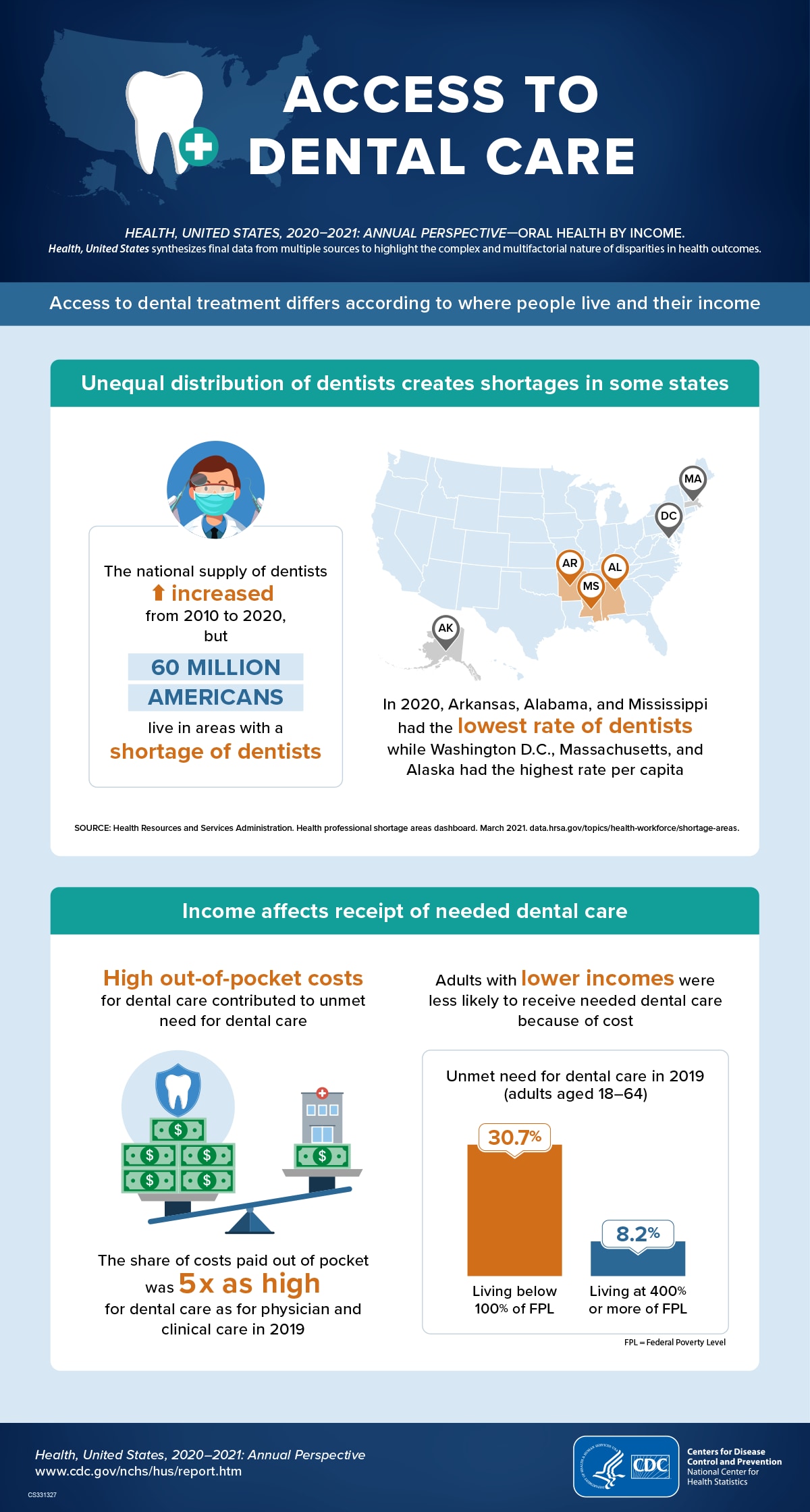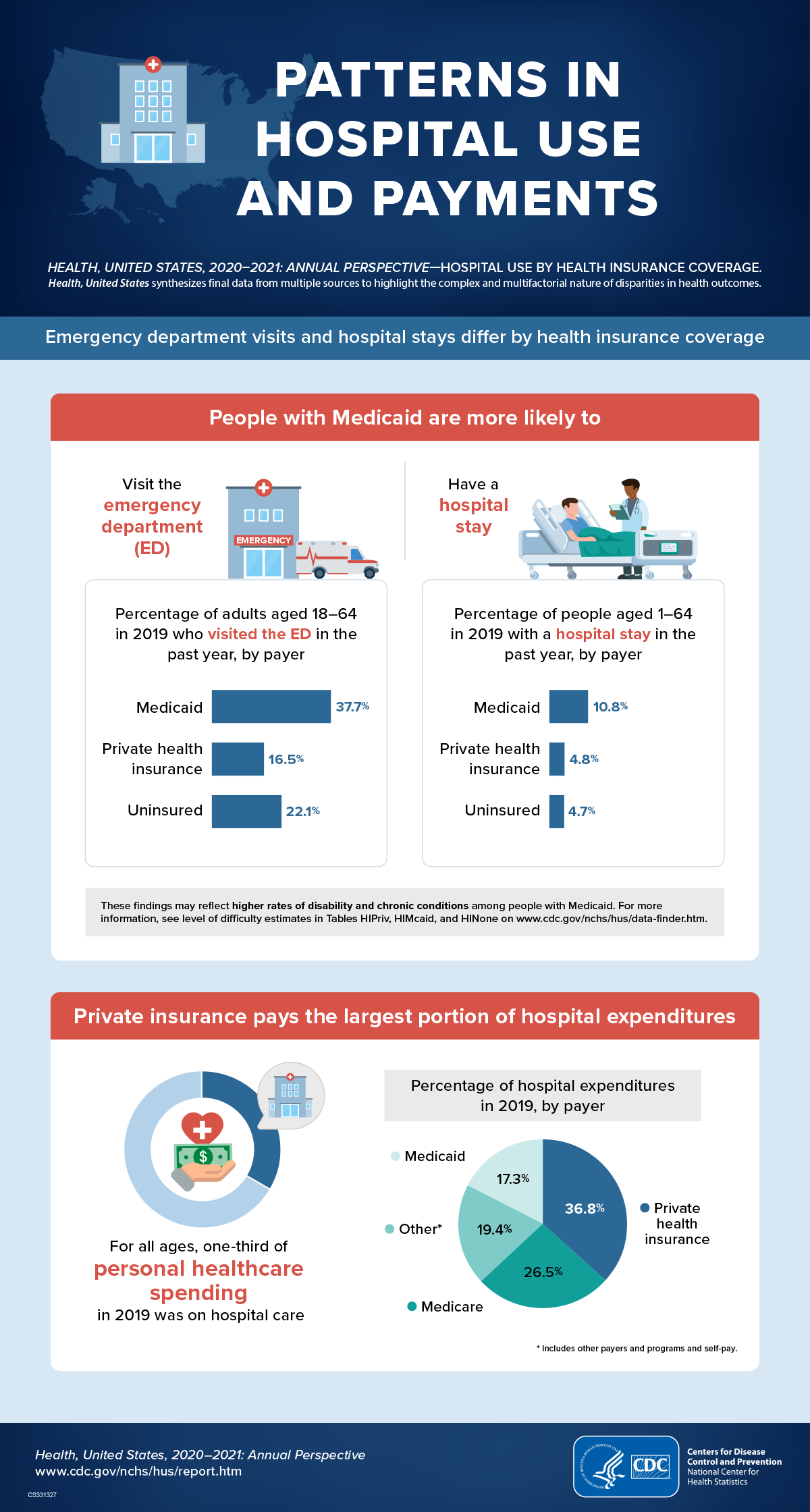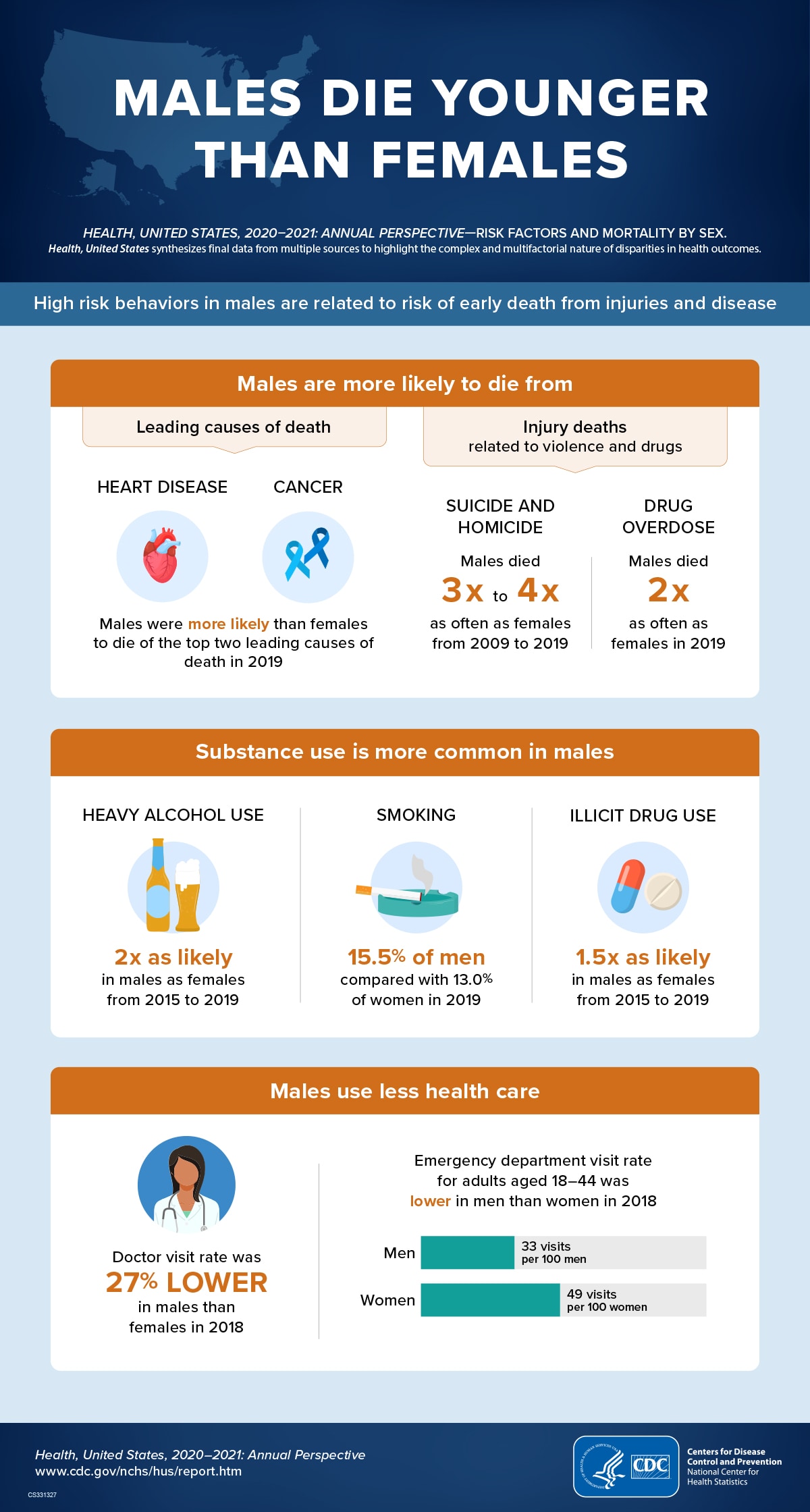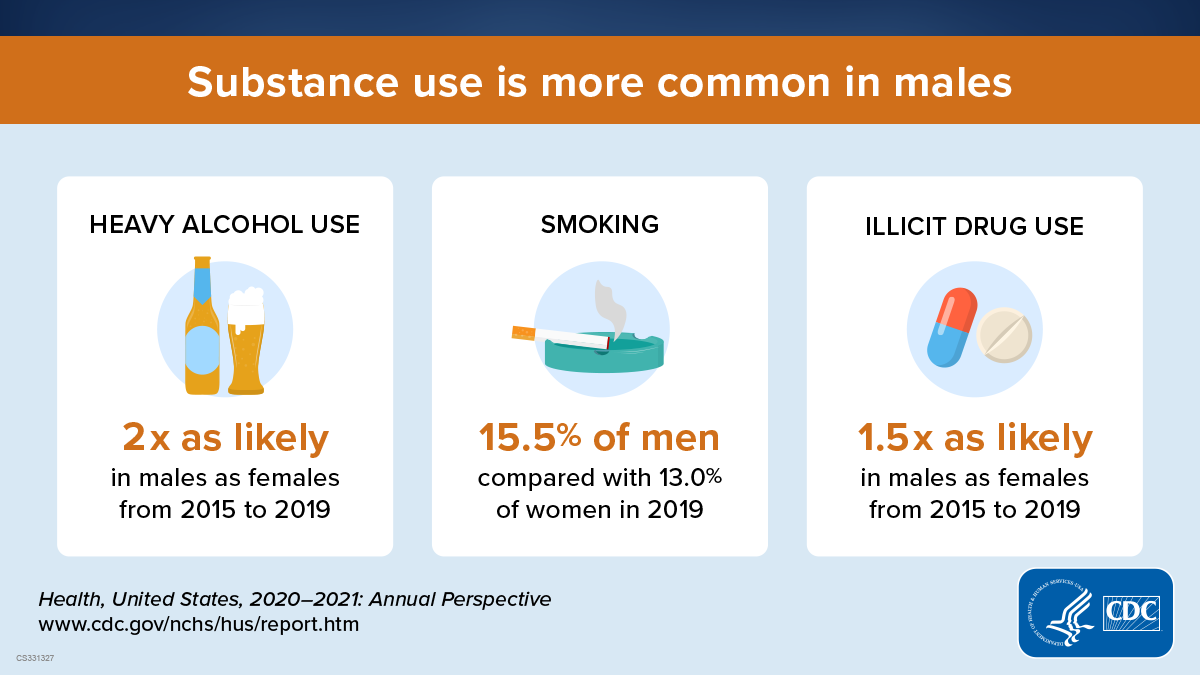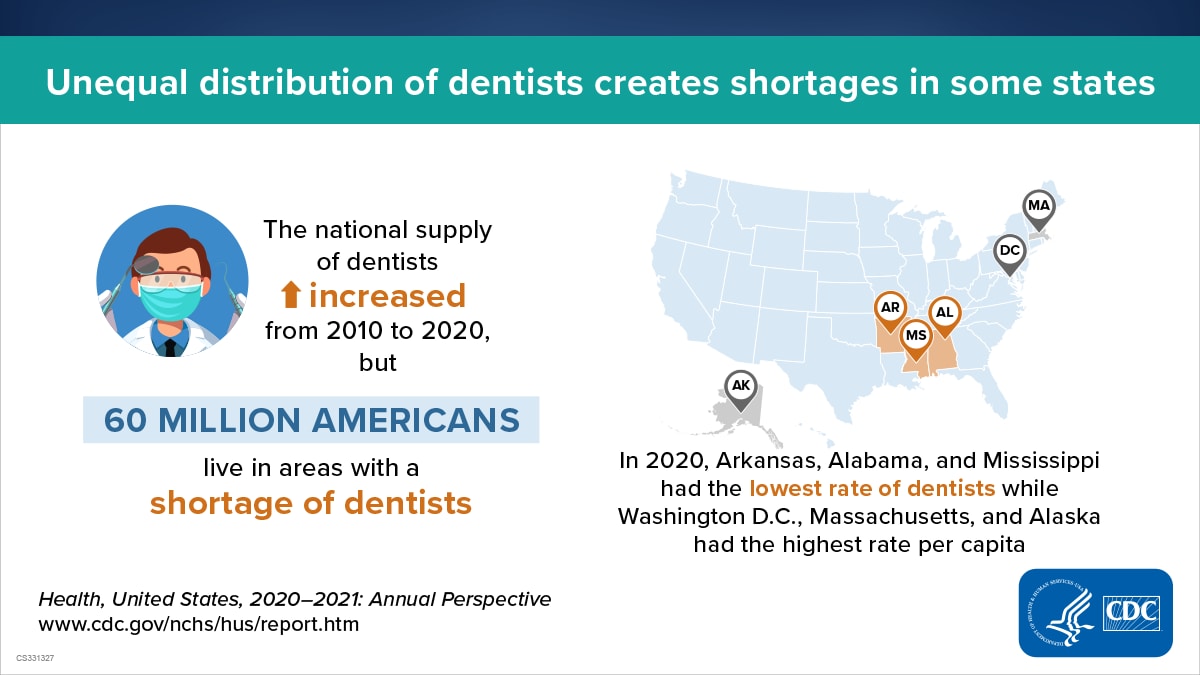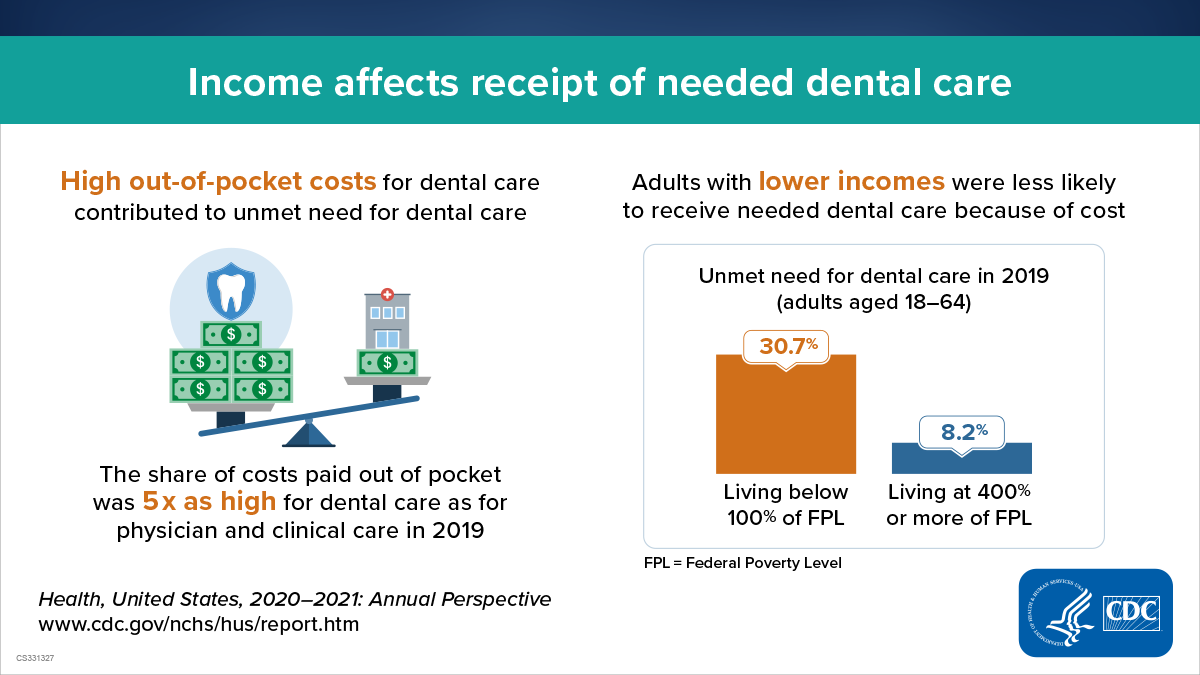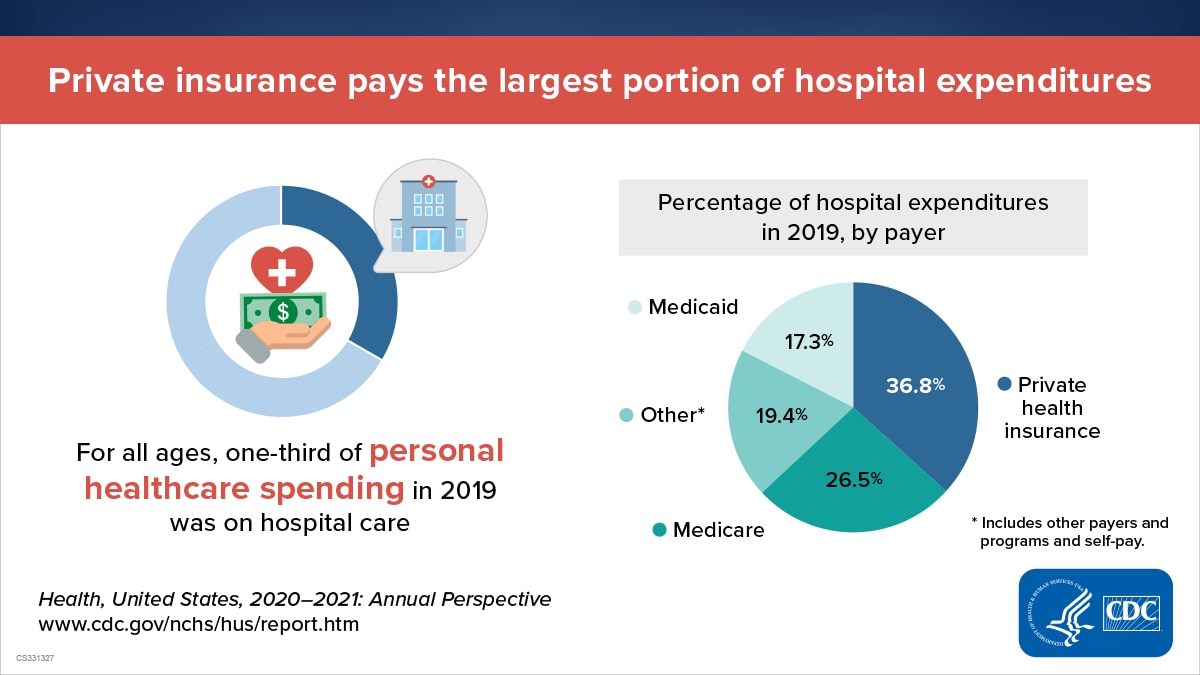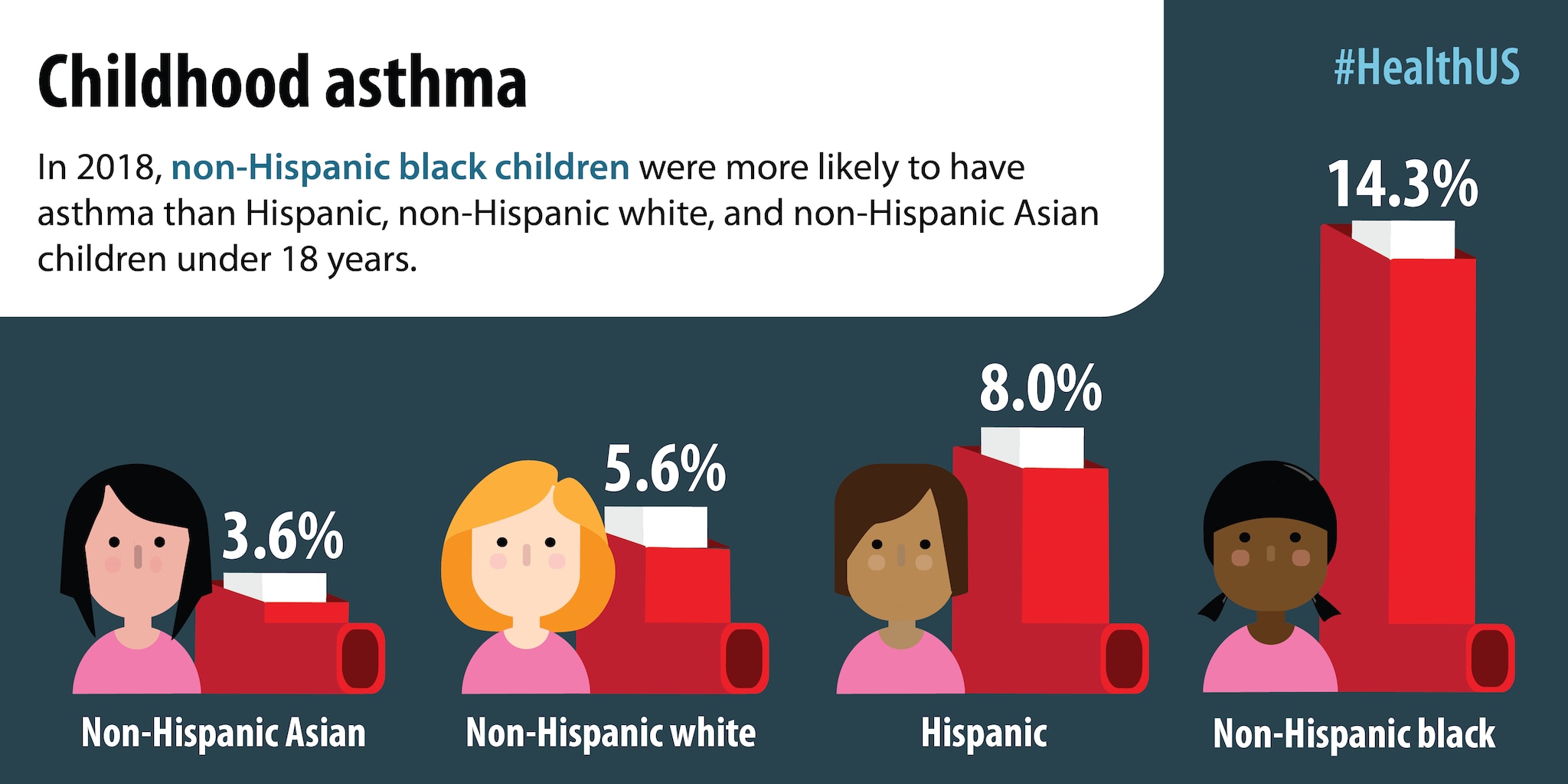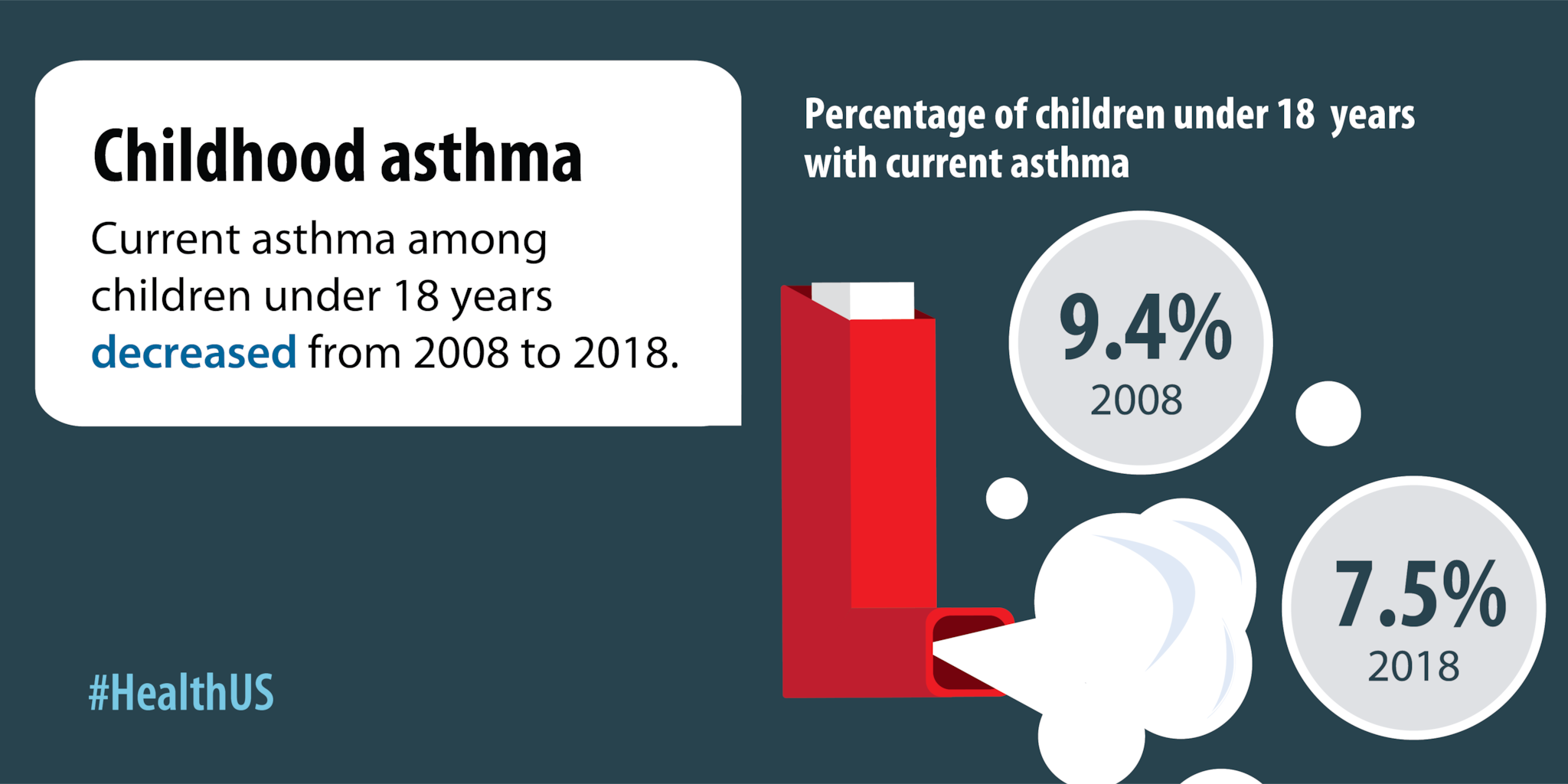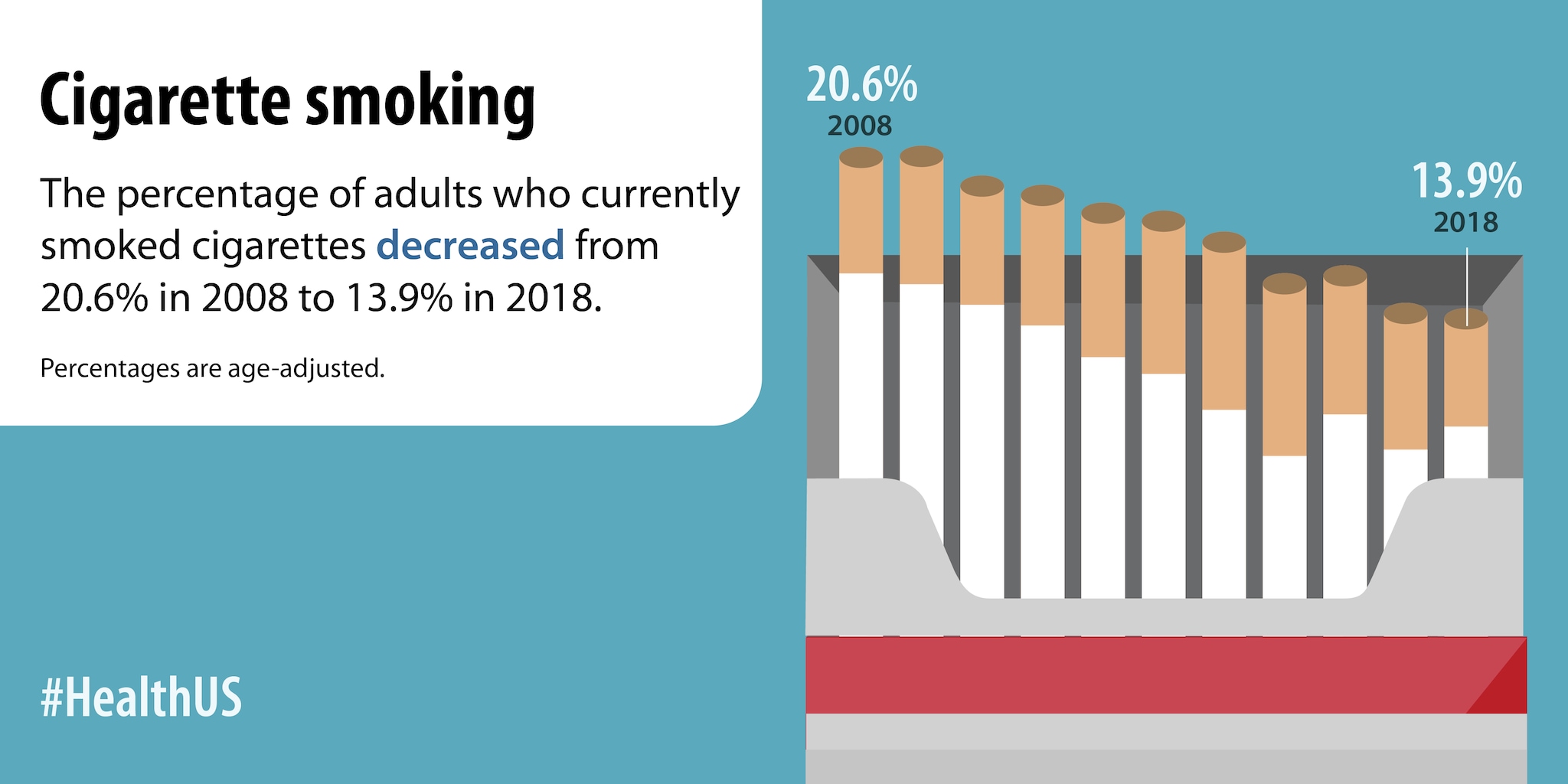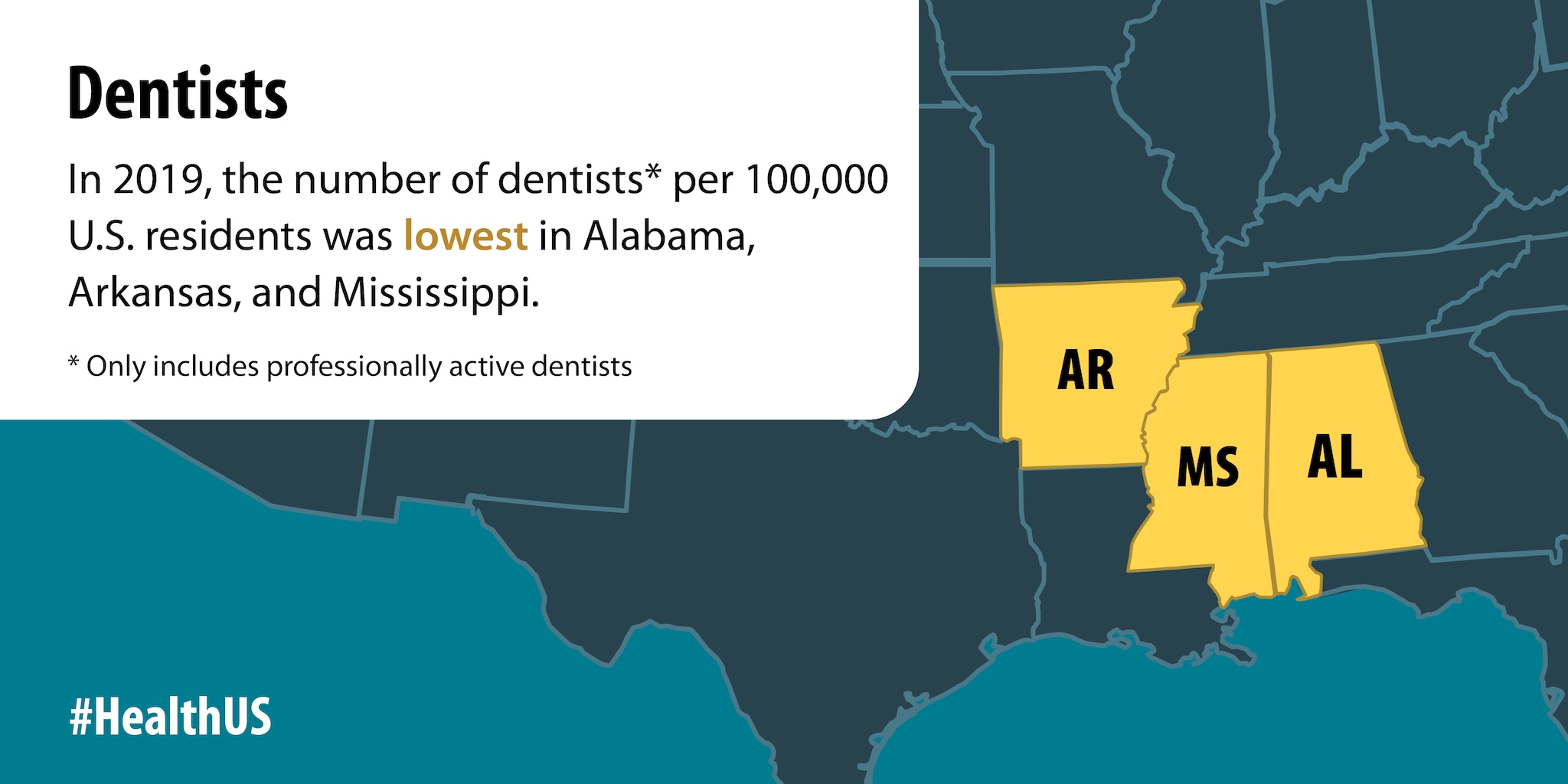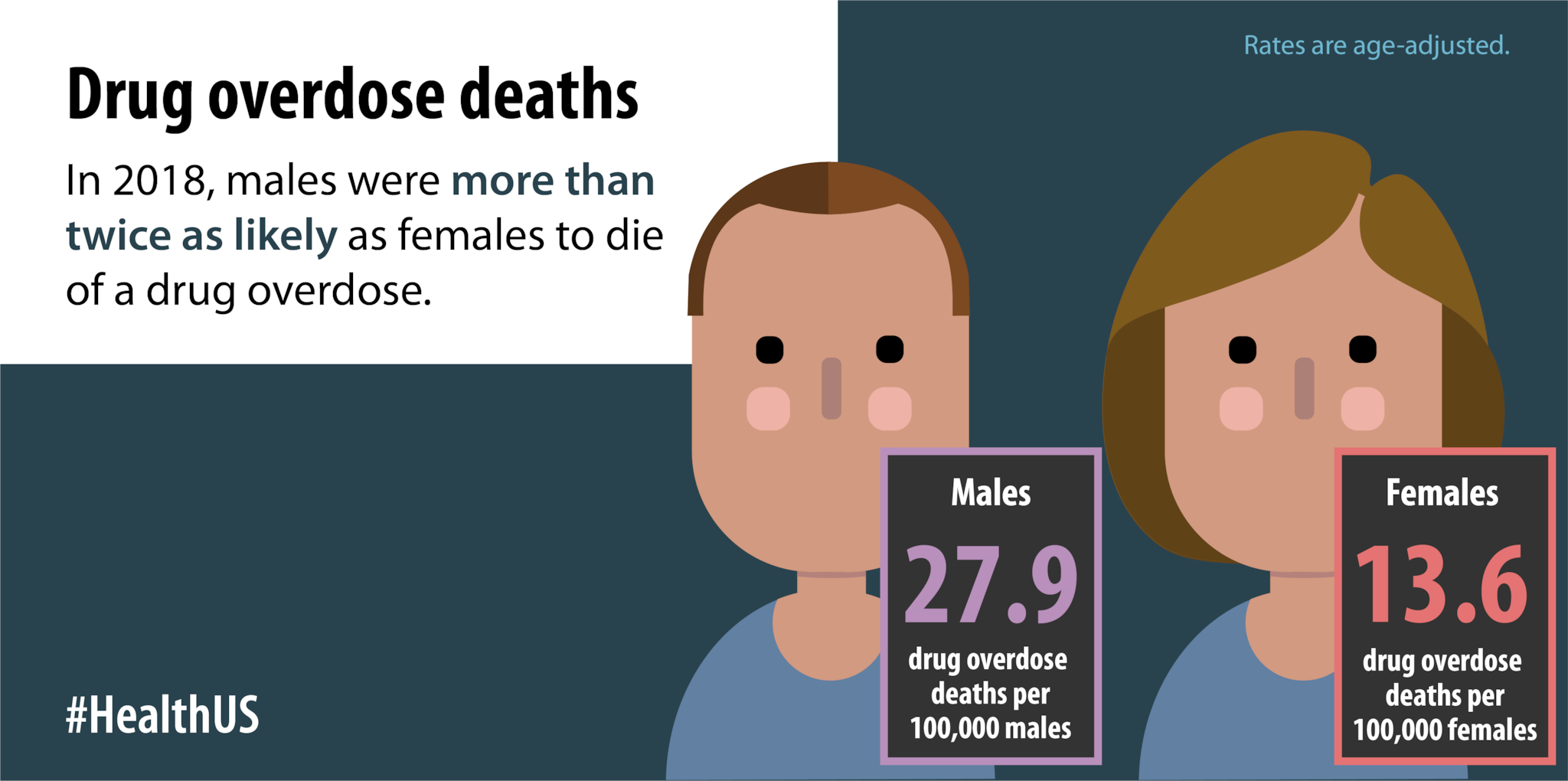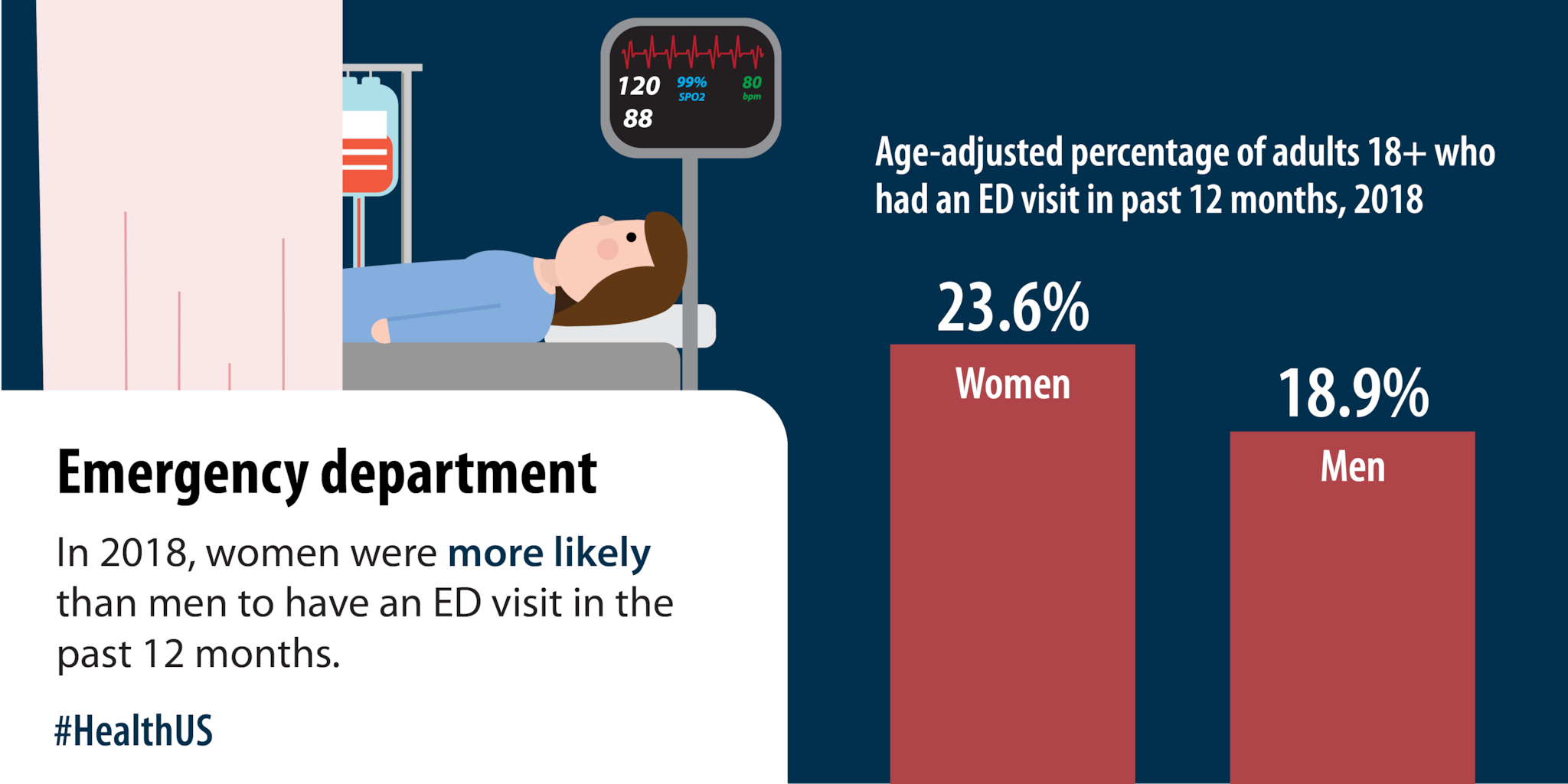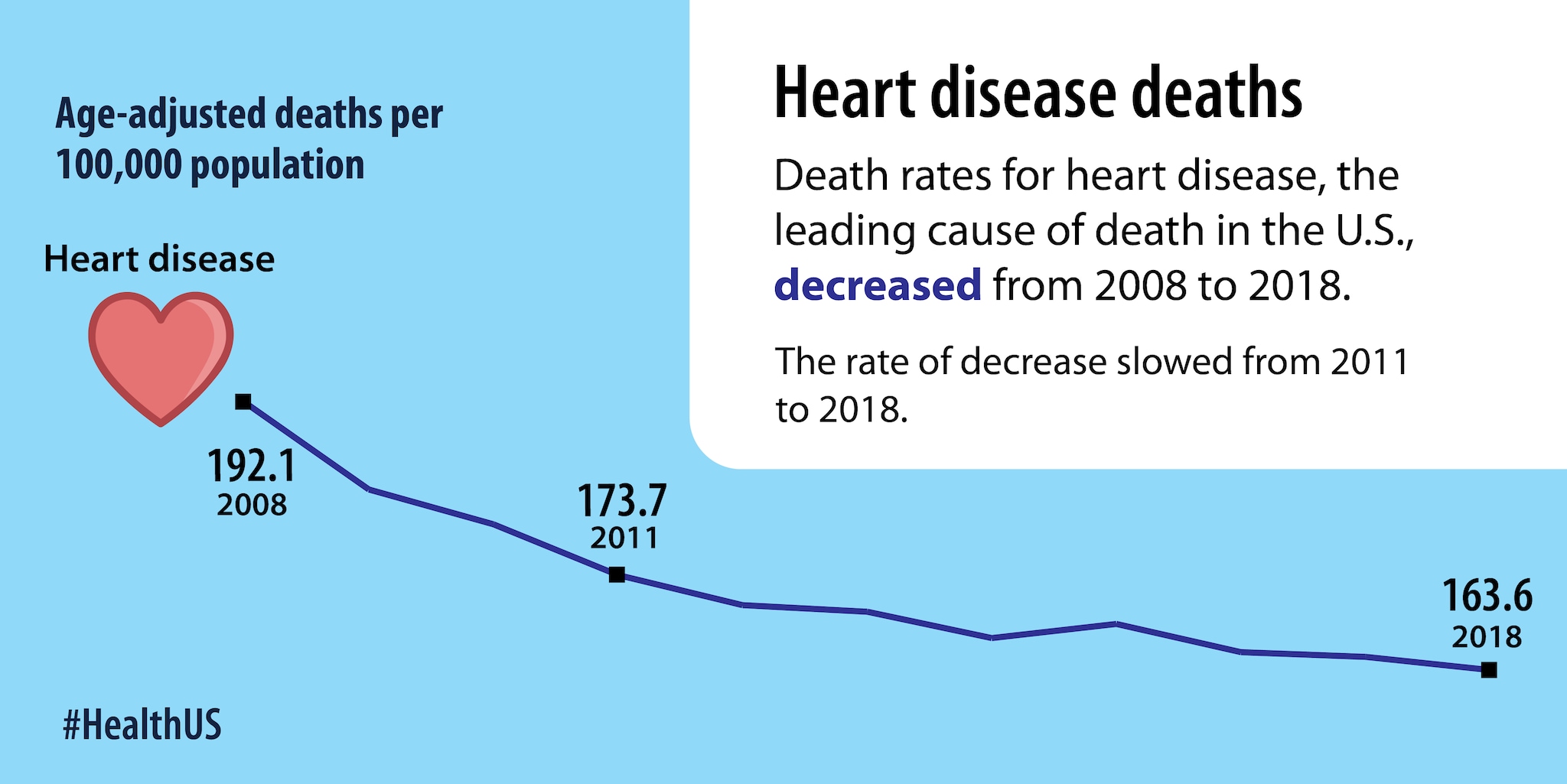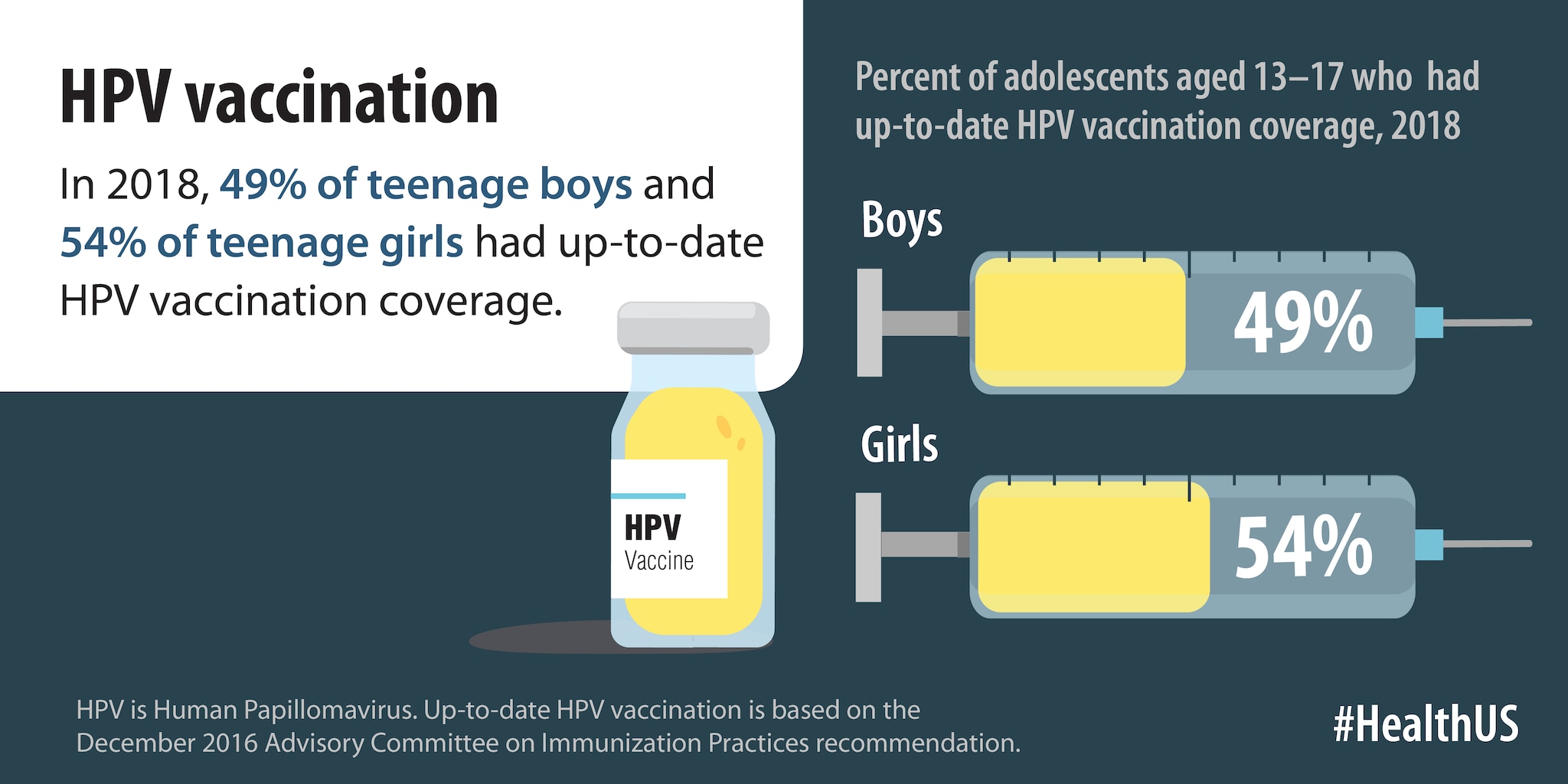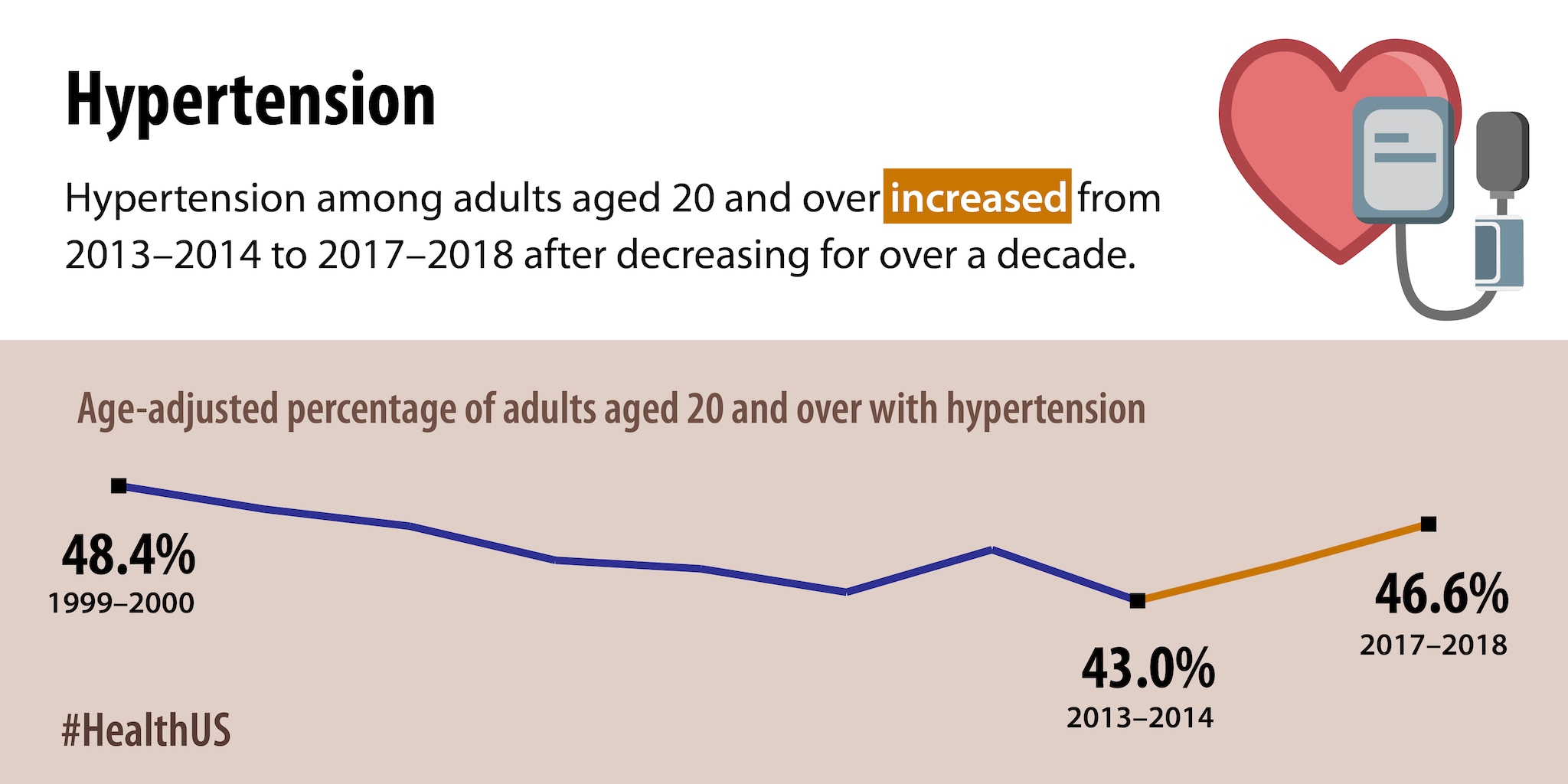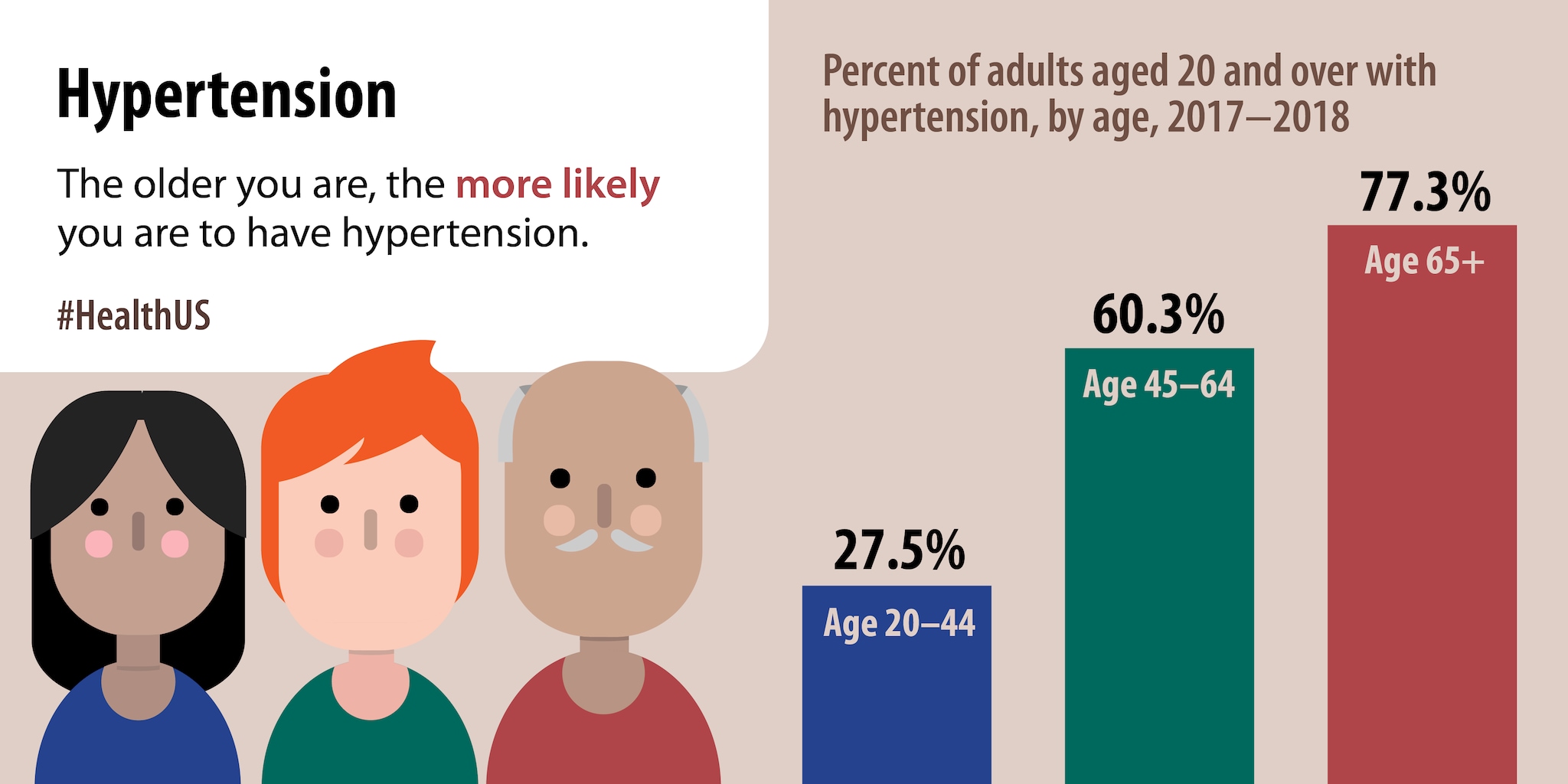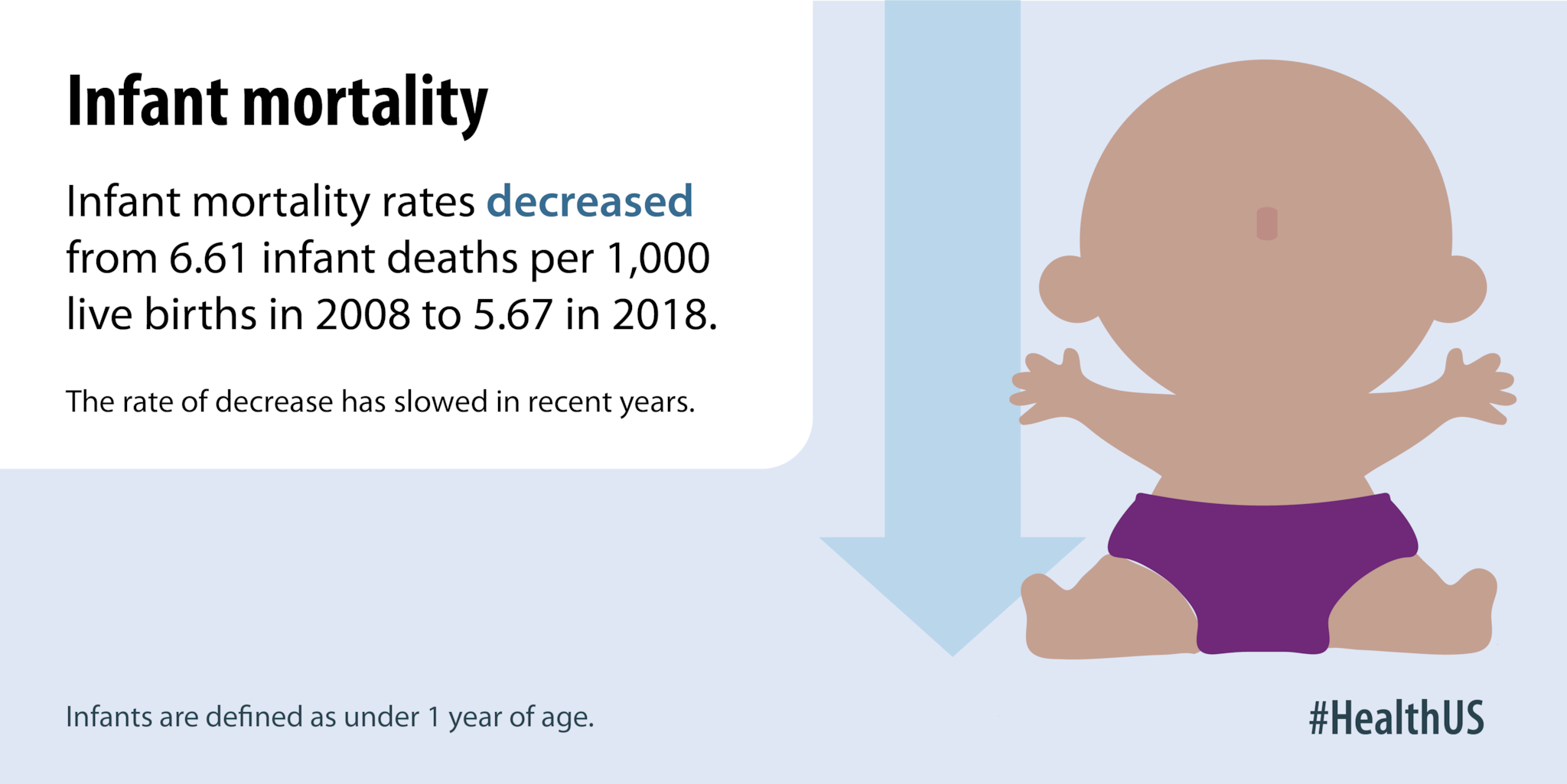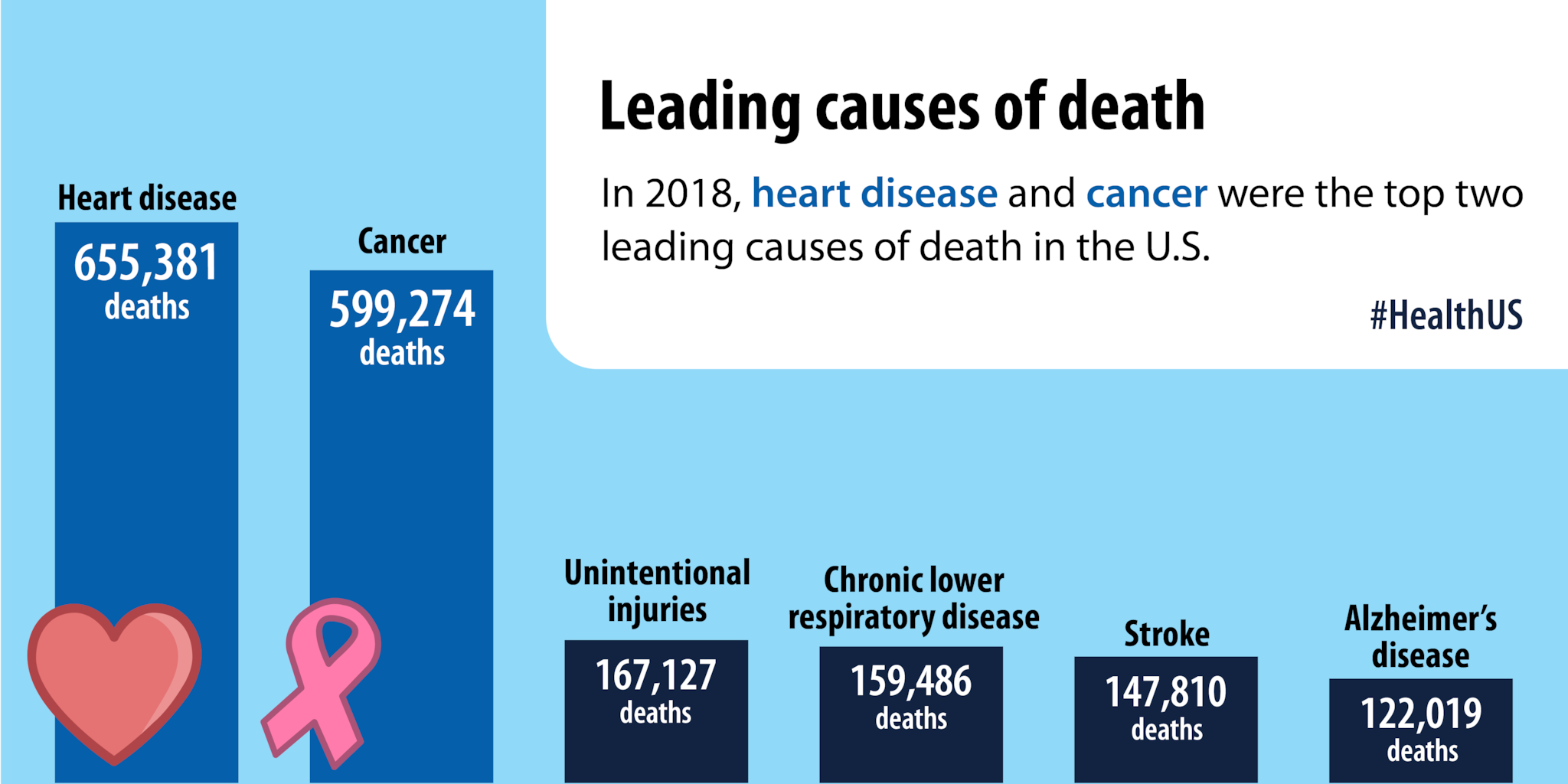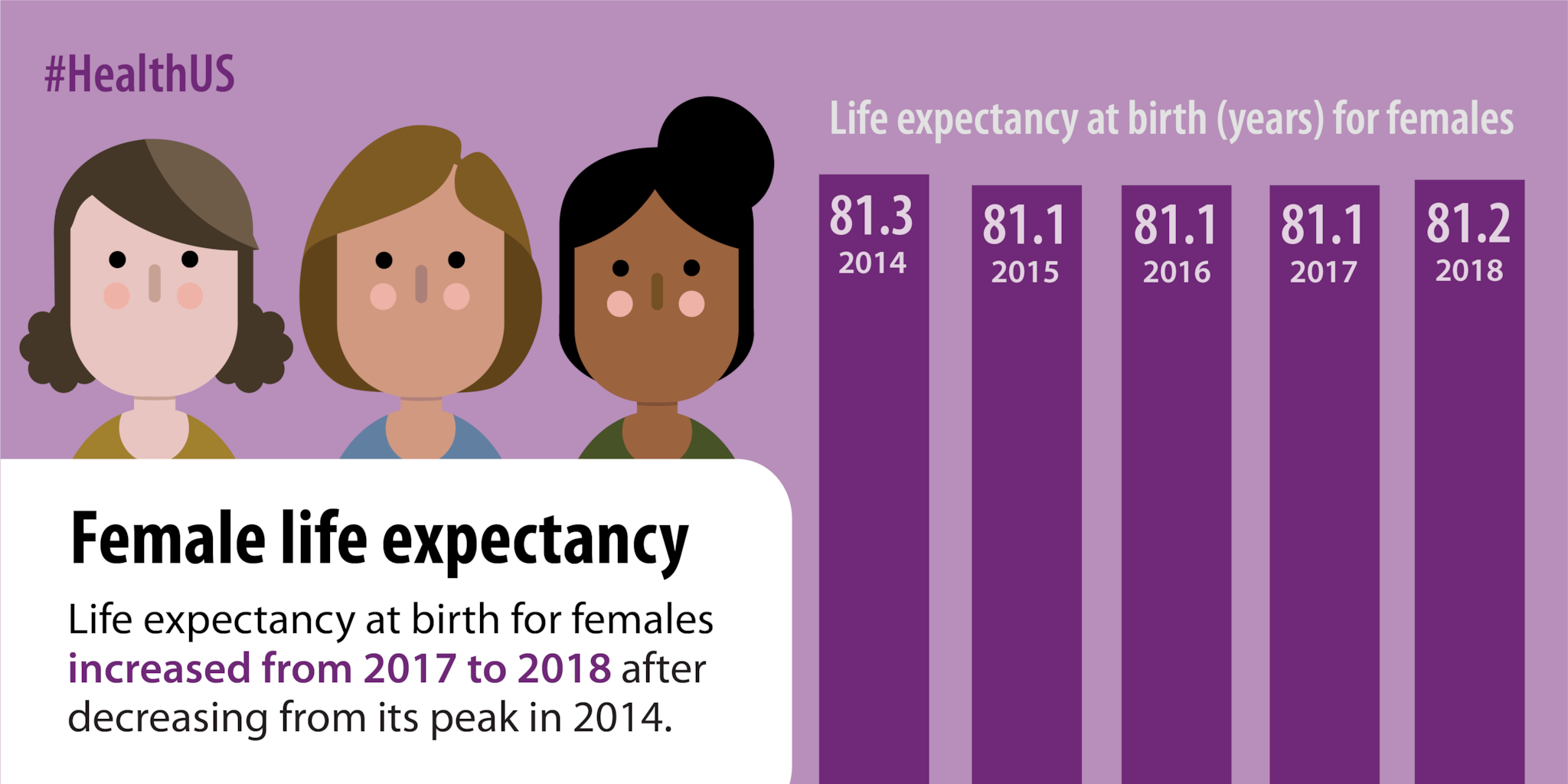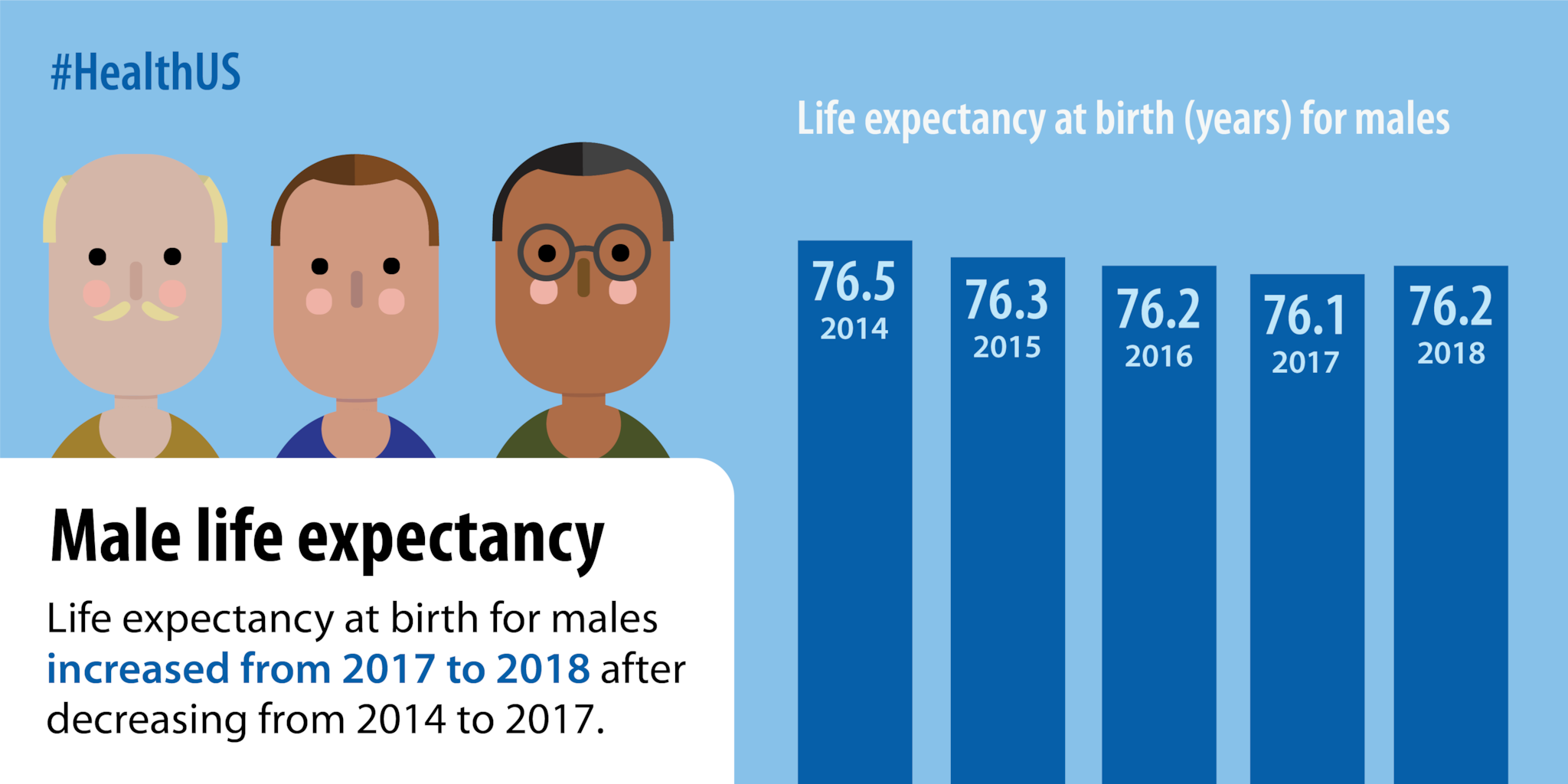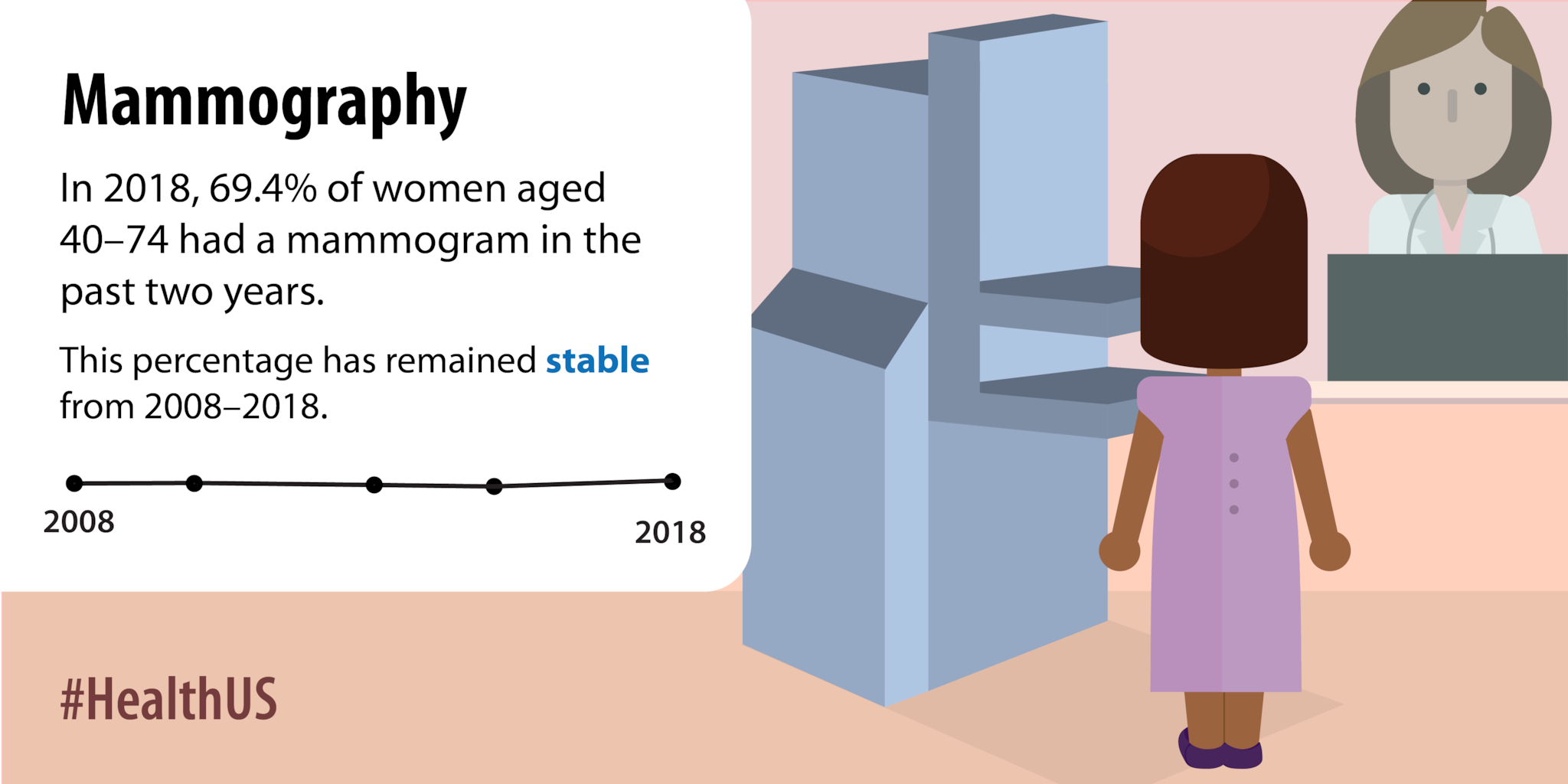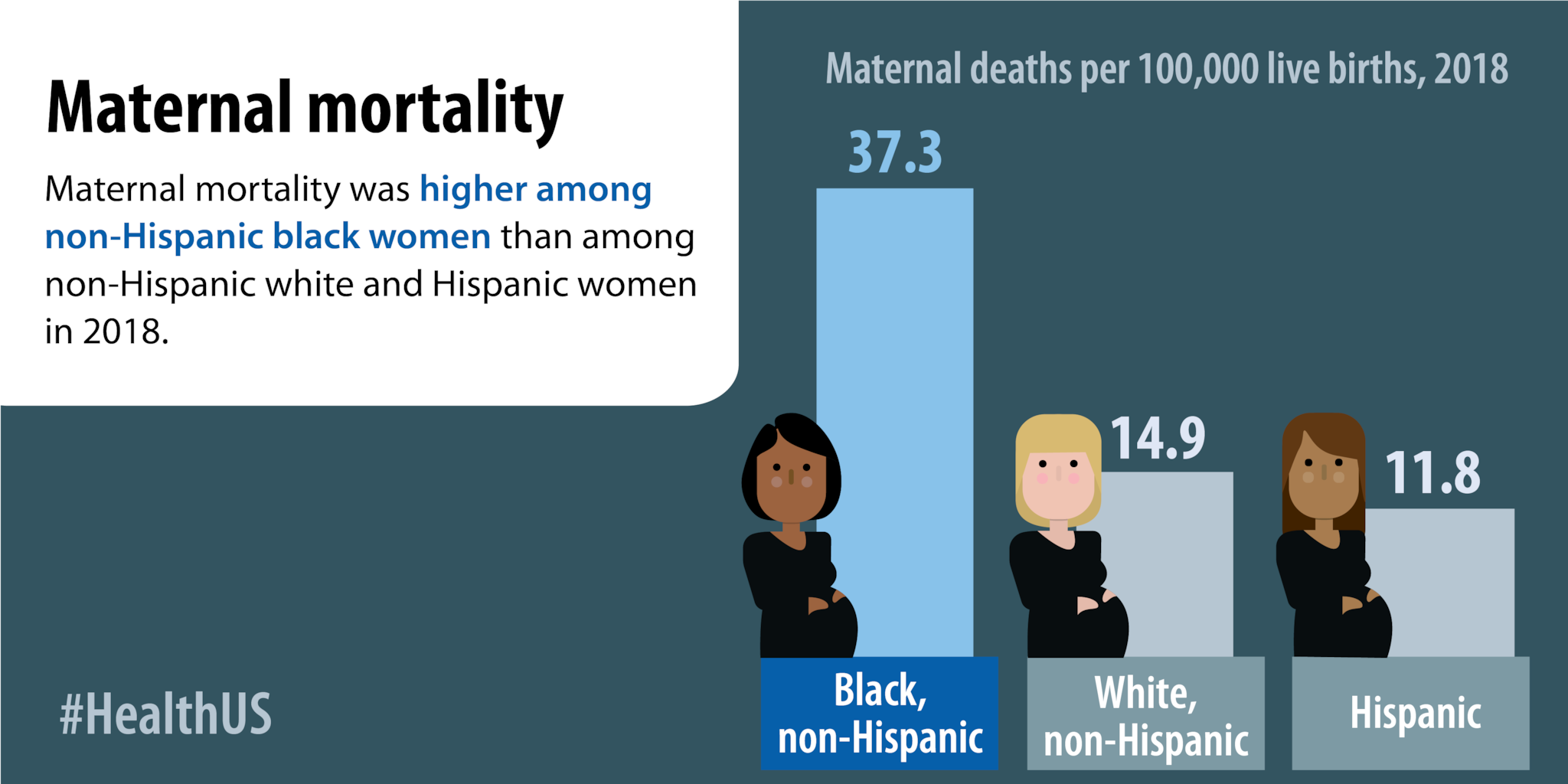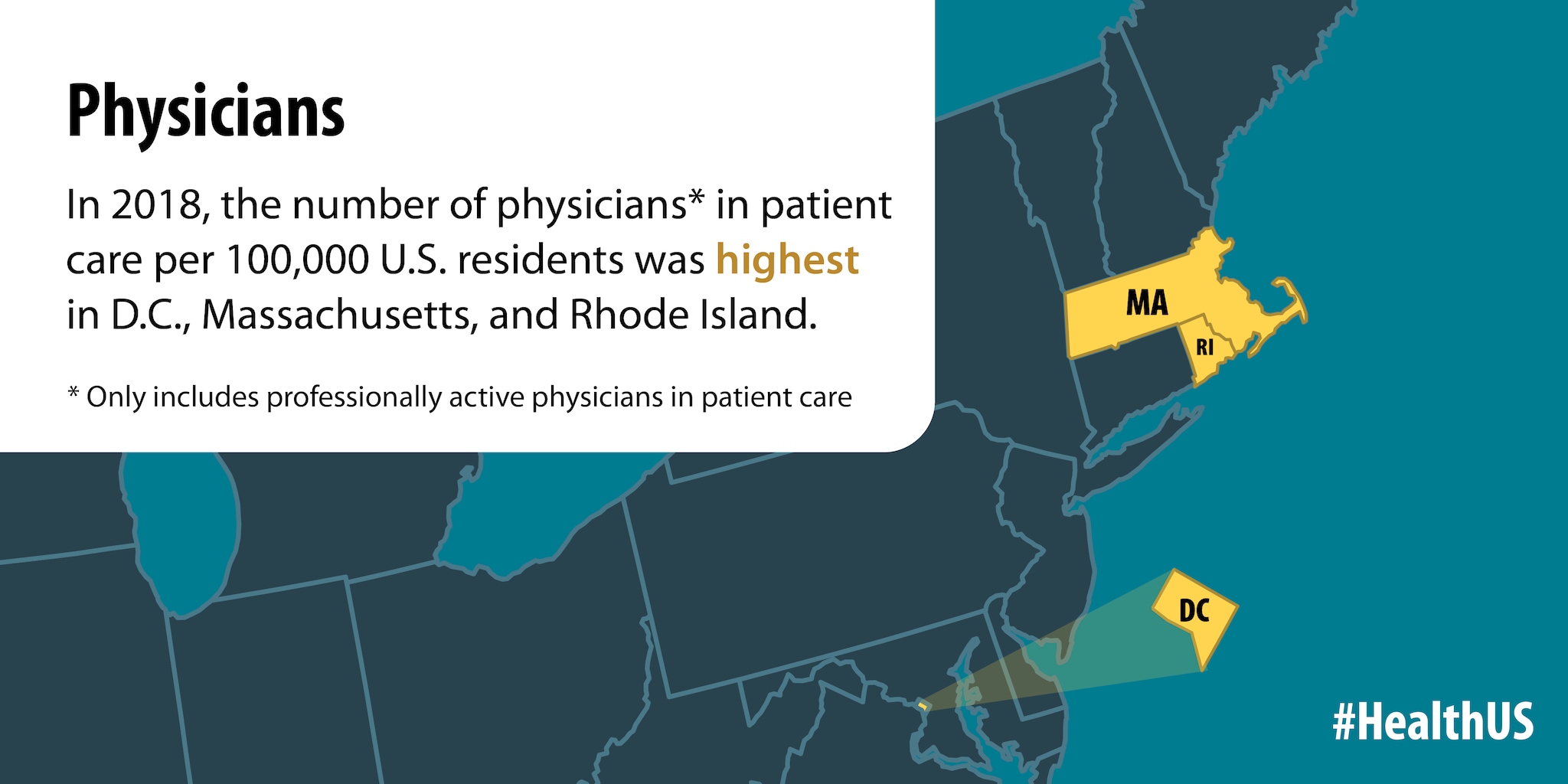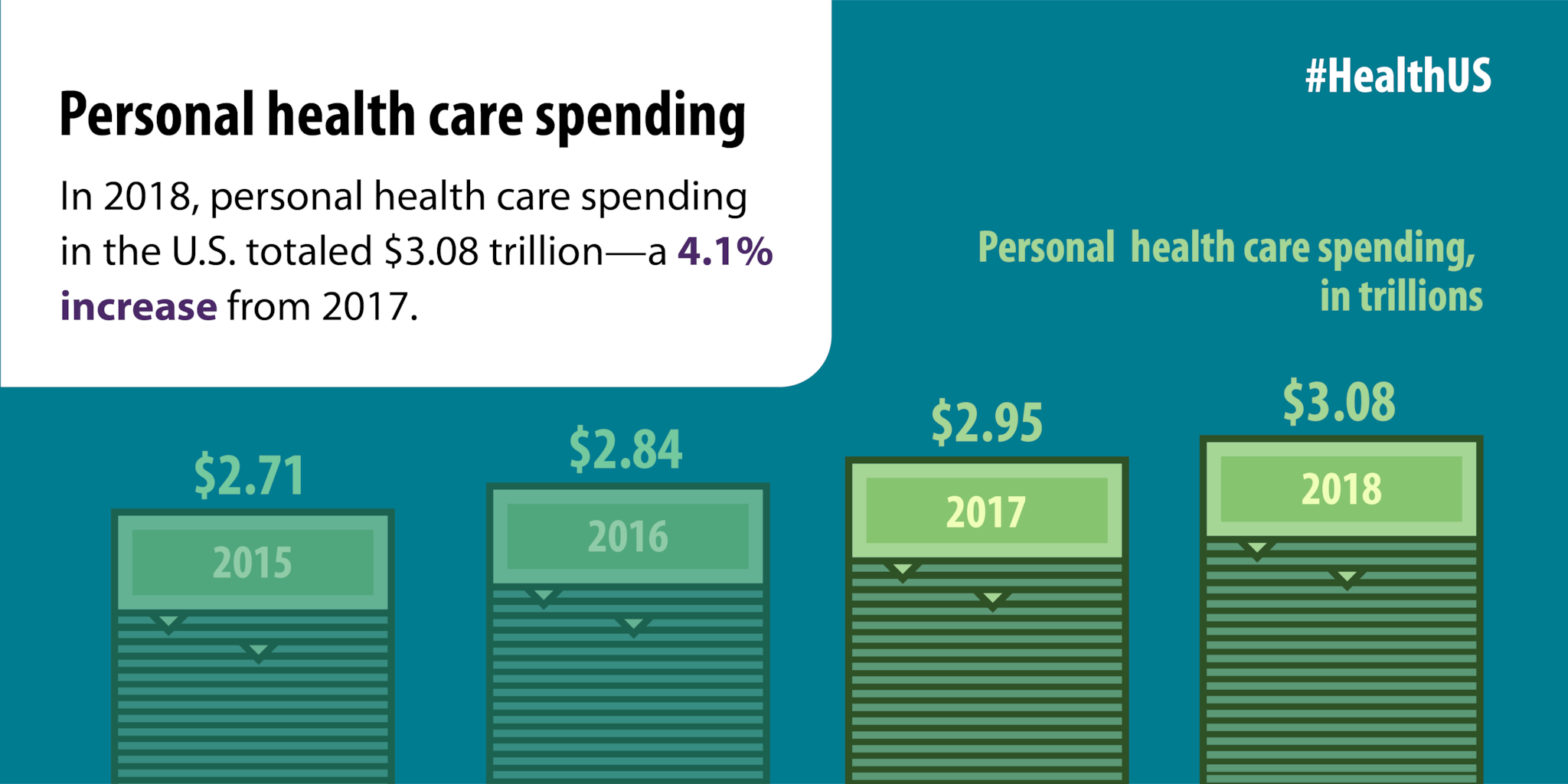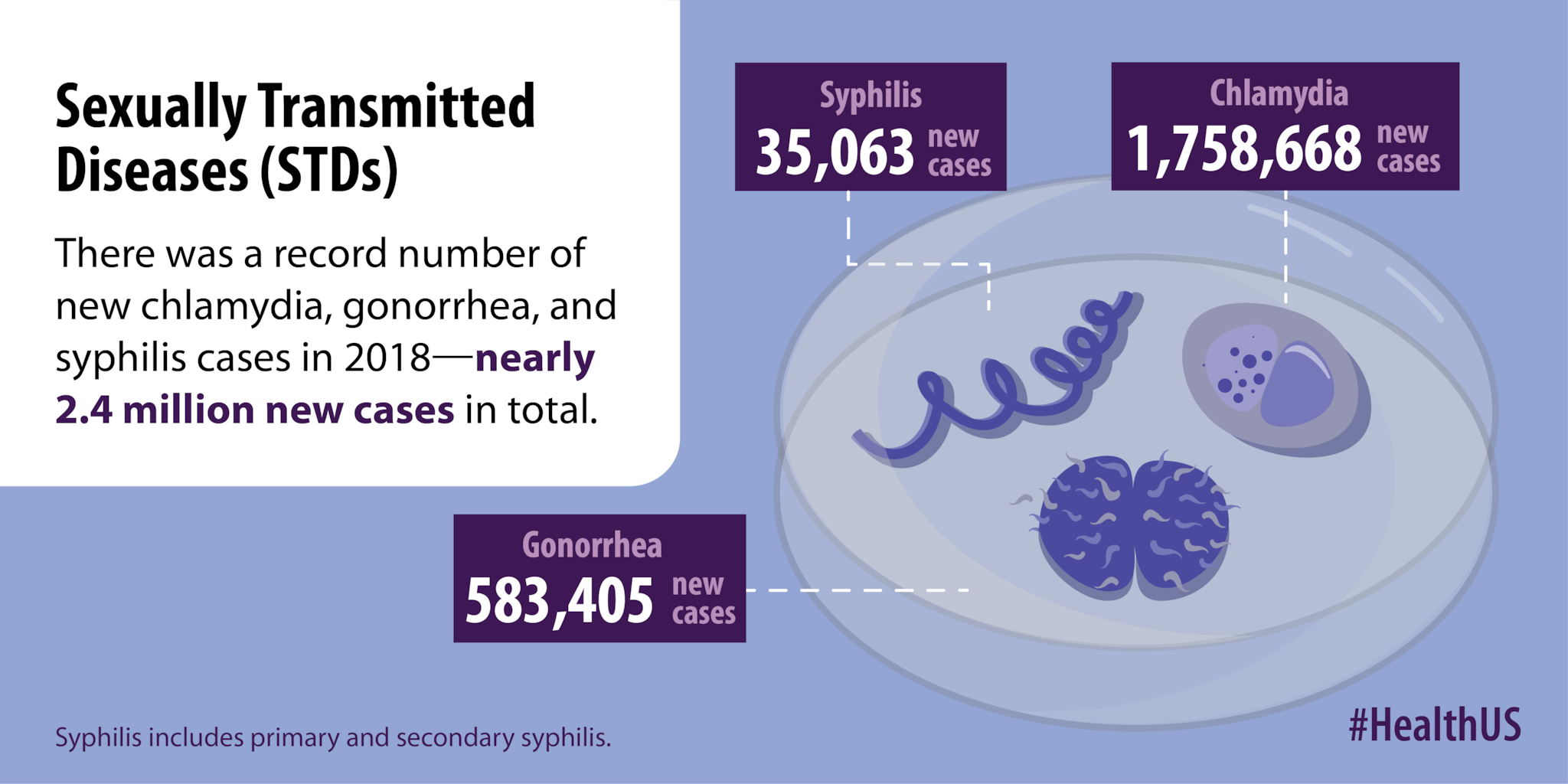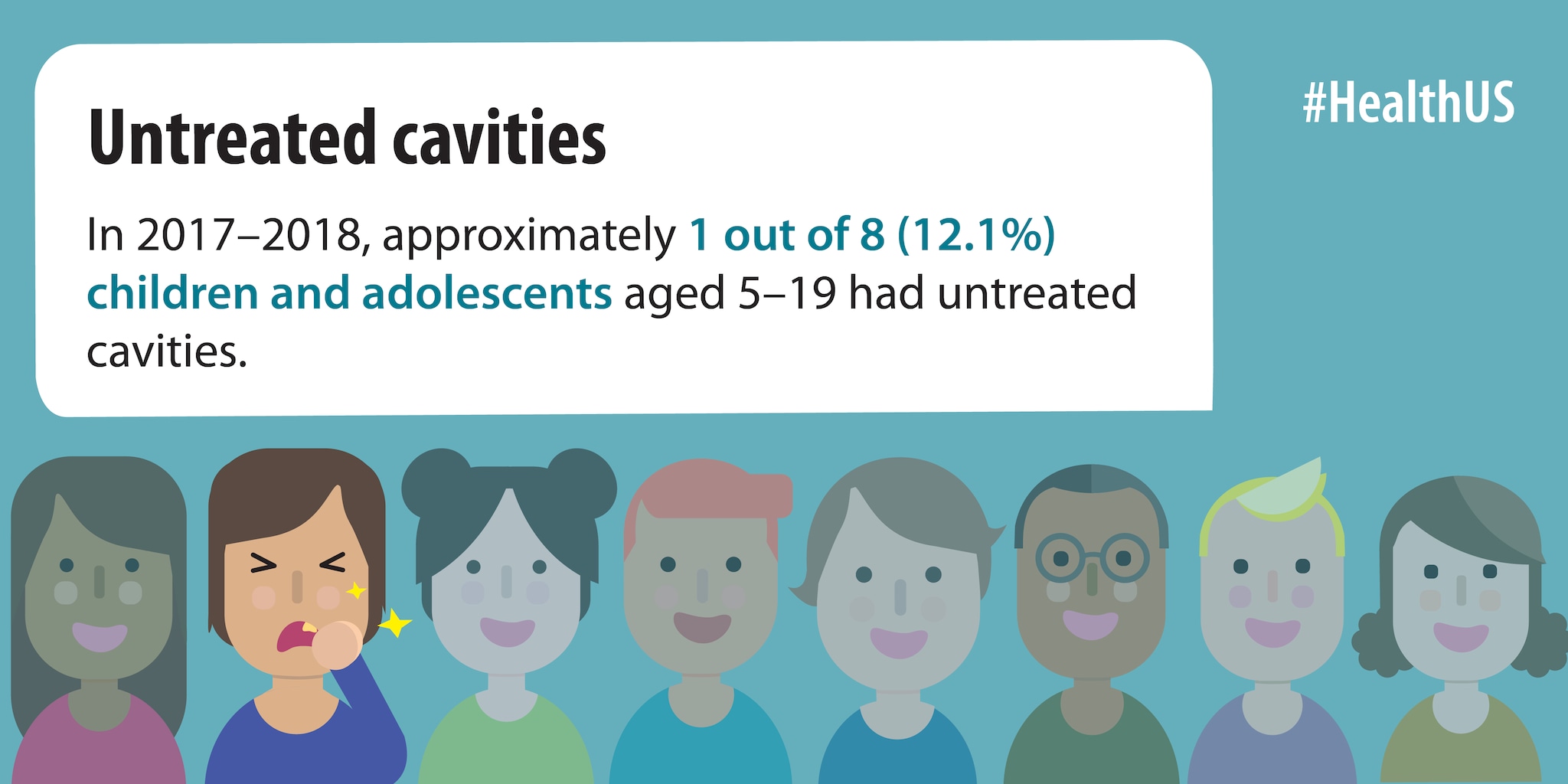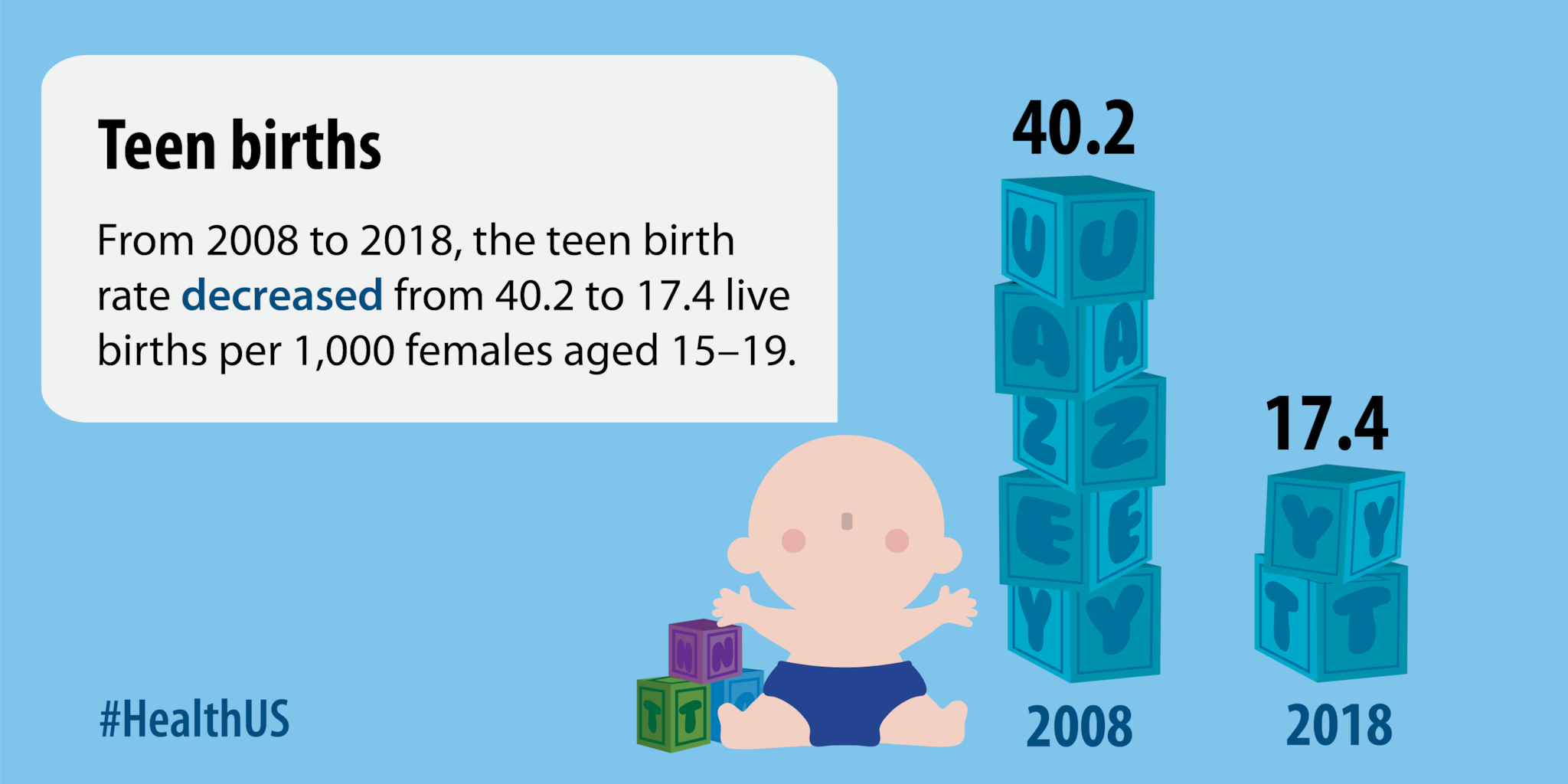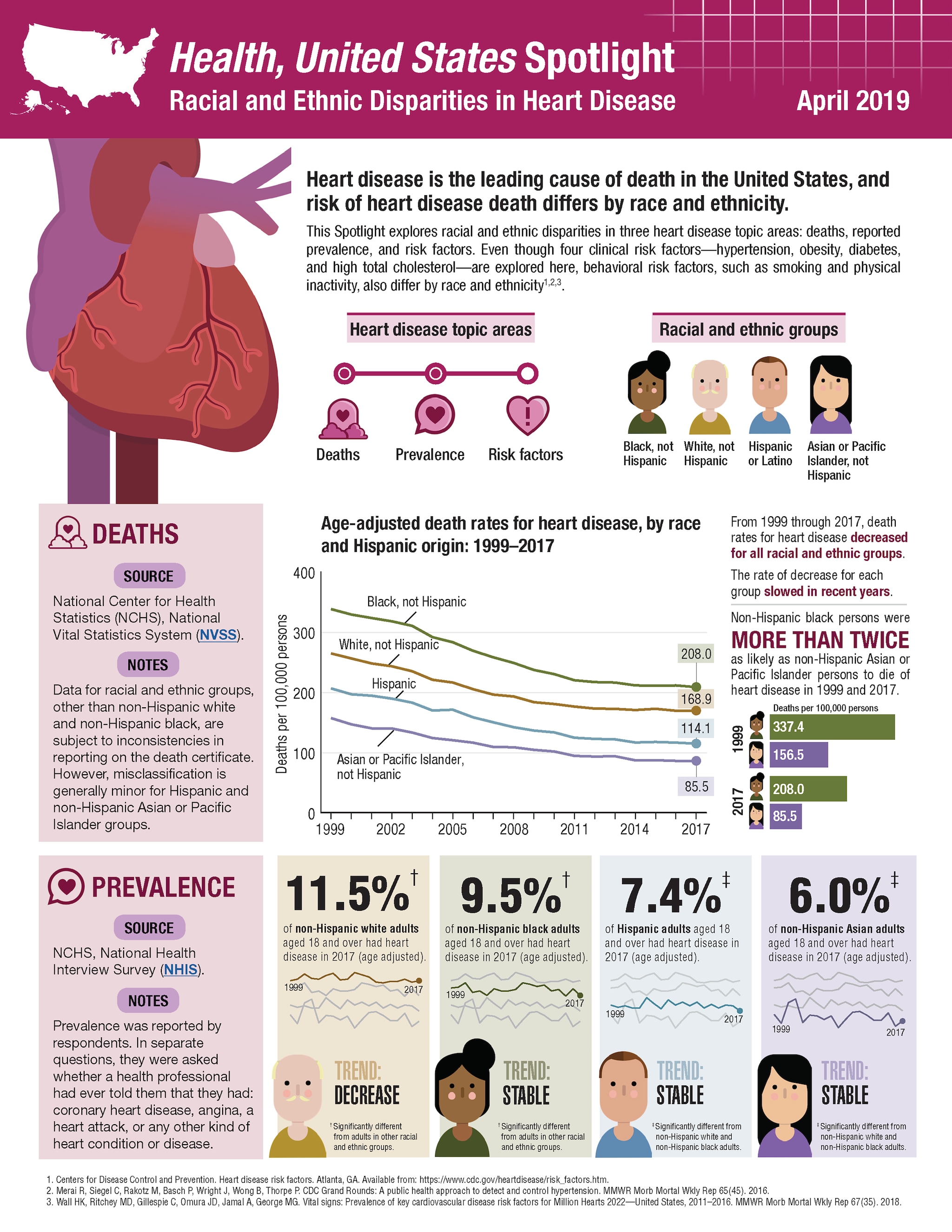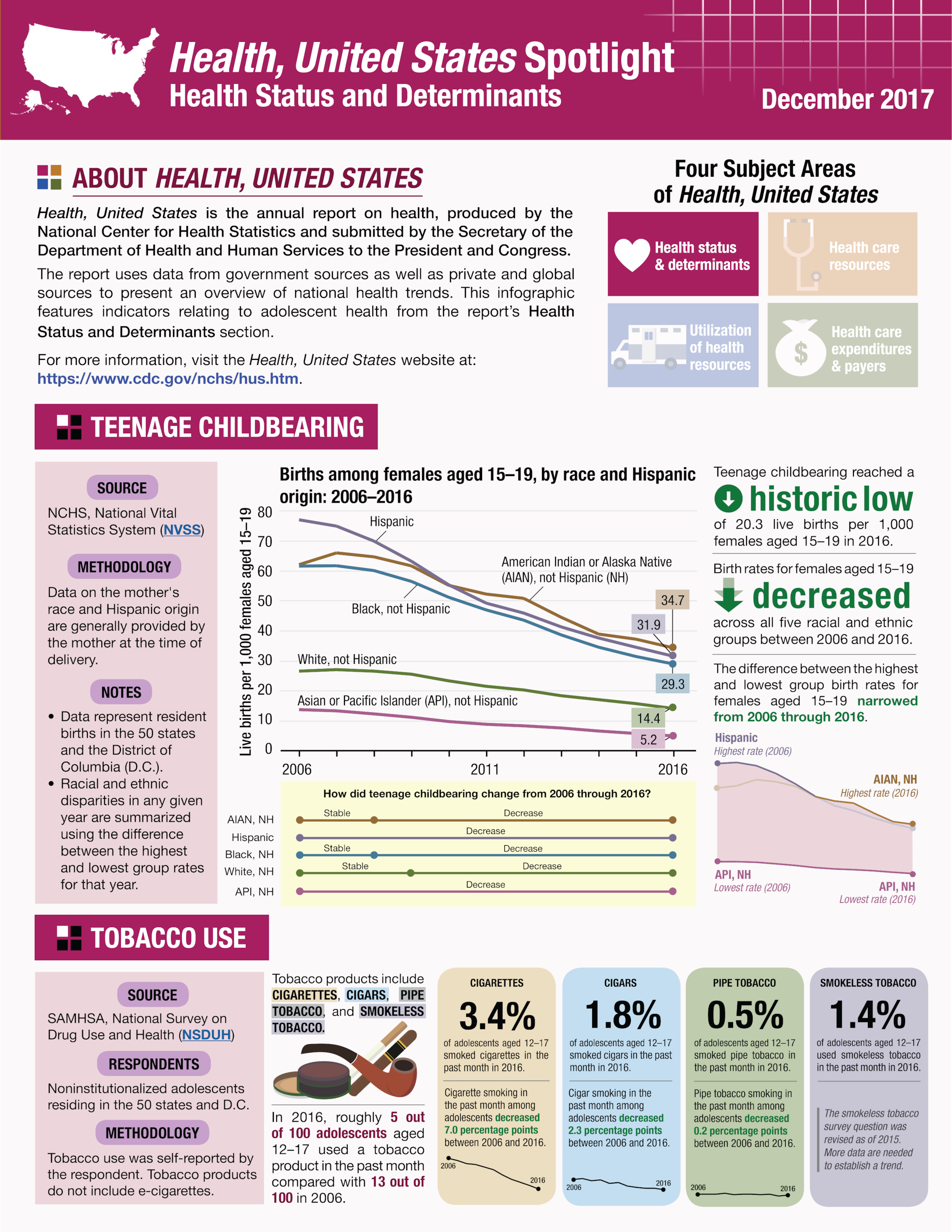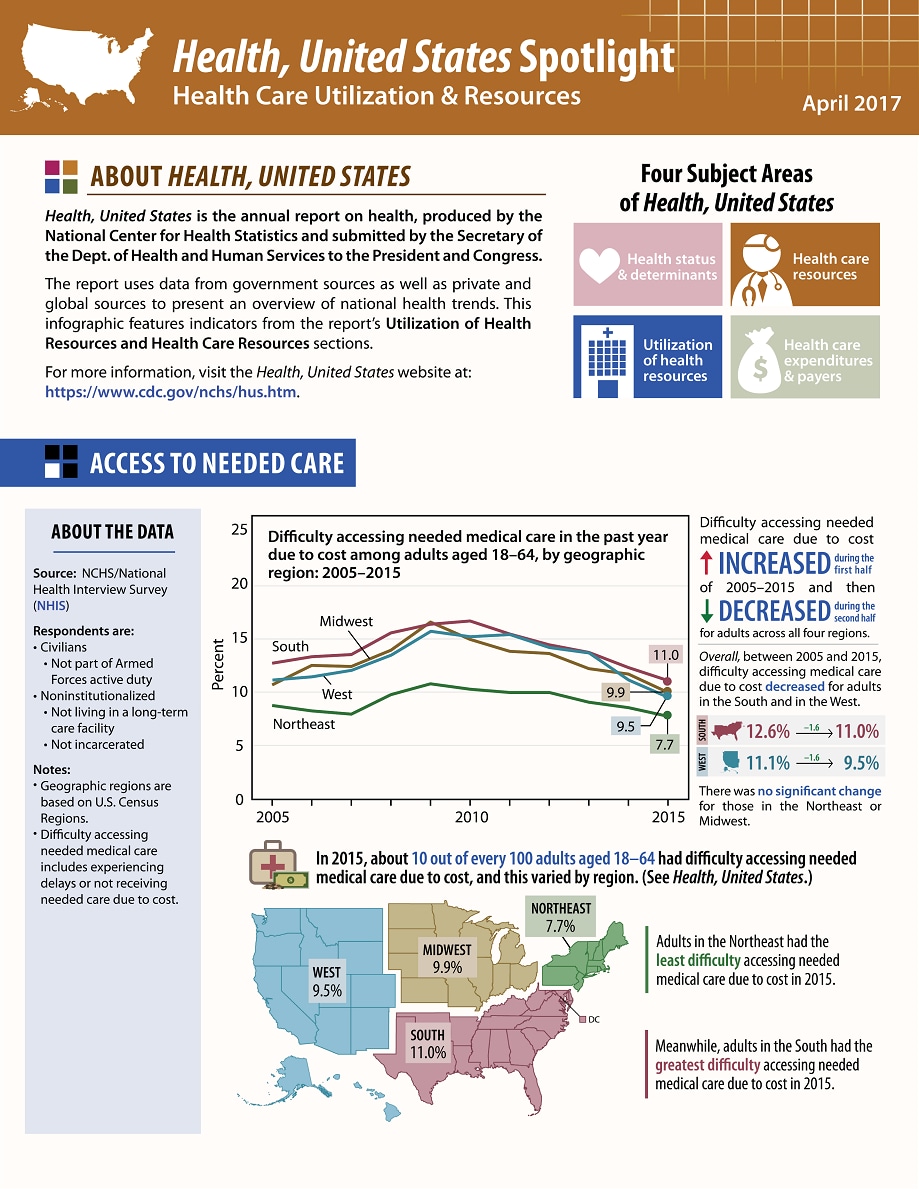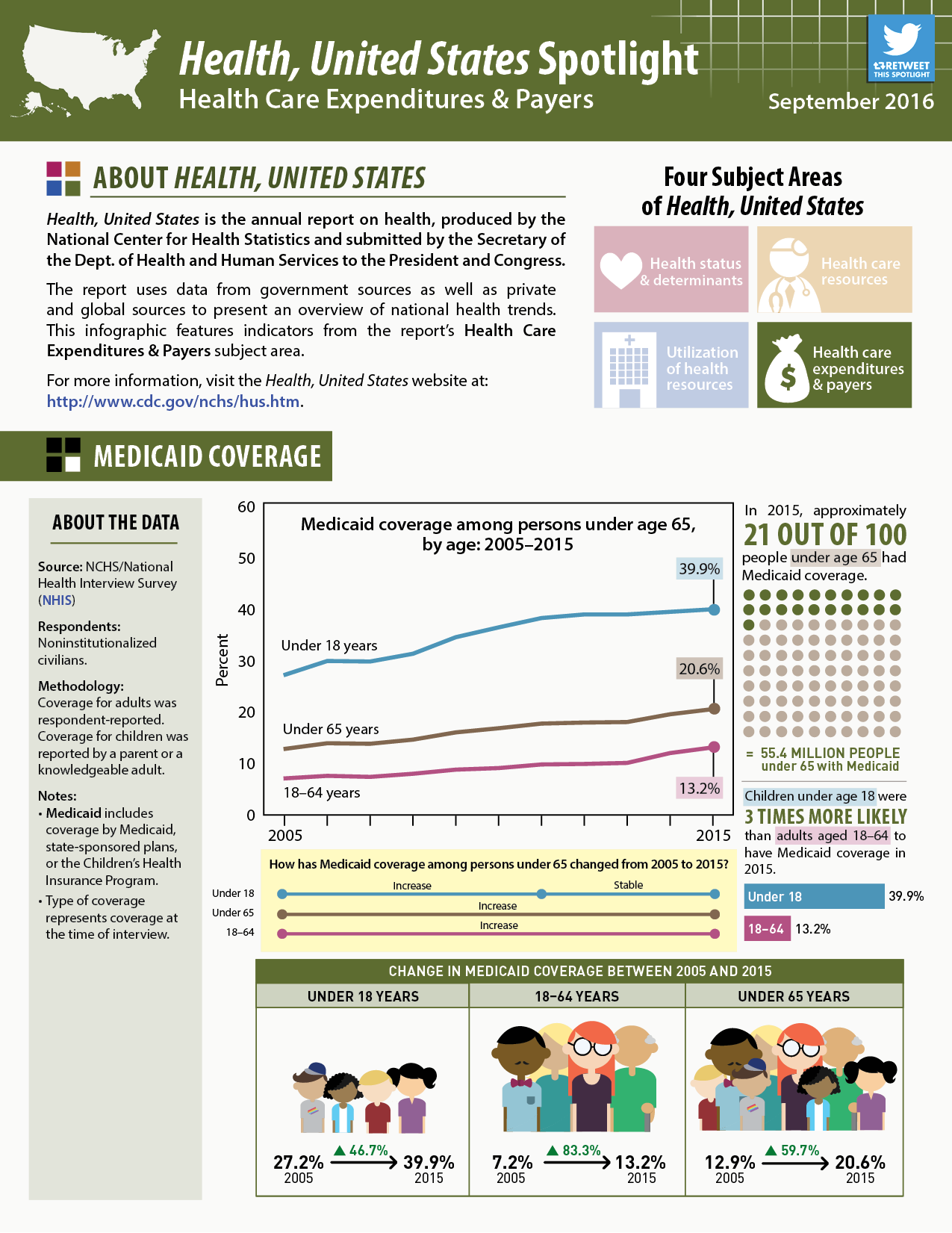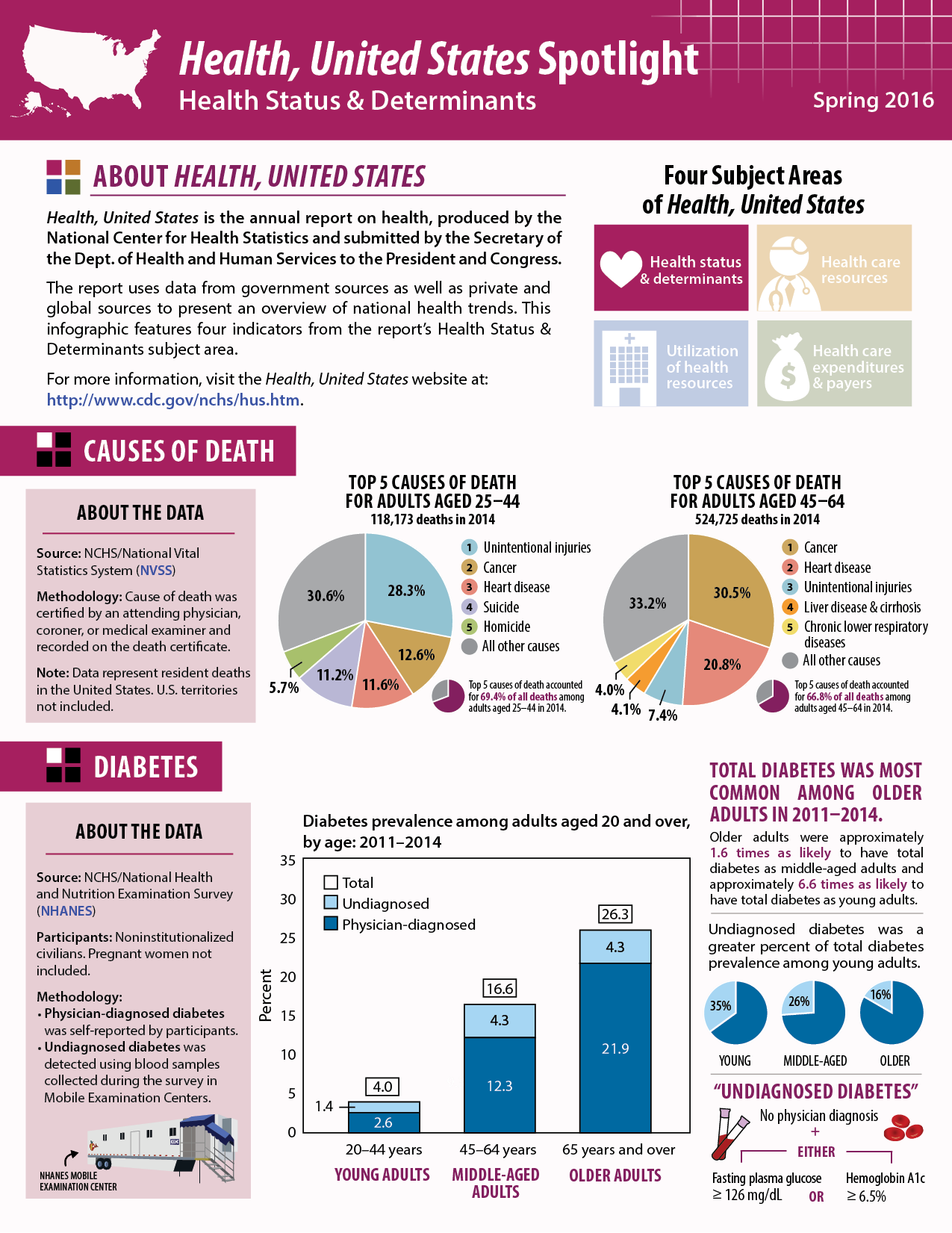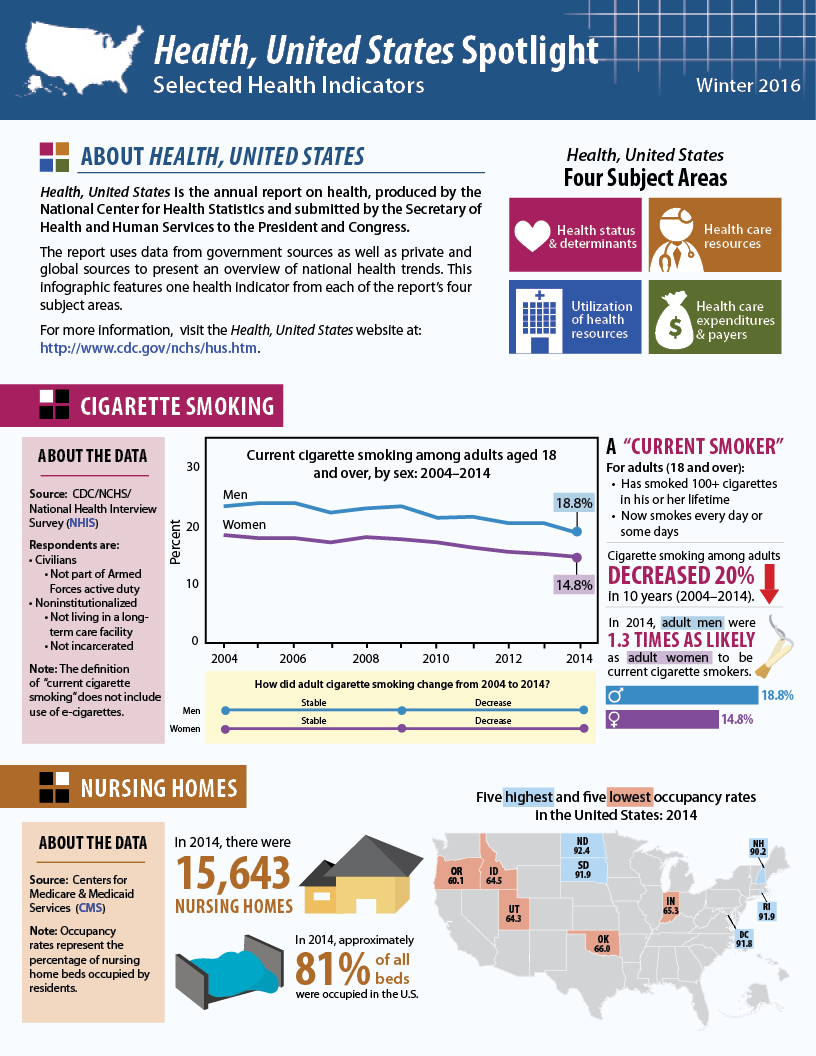Infographic Gallery
Health, United States 2020-2021 Infographics
Twitter Graphics
Health, United States, 2020–2021
Health, United States, 2019
Spotlight Infographics
The Health, United States Spotlight is an infographic series that explores topics of public health importance using data from the Health, United States annual report. Spotlights are published throughout the year and feature the most current data available at the time of publication. Consistent with the annual report, the Spotlight focuses on trends over time and features data from both NCHS and non-NCHS (government or private) sources. Health, United States data cover four subject areas: health status and determinants, utilization of health resources, health care resources, and health care expenditures and payers.
Methodology
Where possible, changes over time and differences across groups are tested for statistical significance. Differences were assessed for statistical significance using statistical testing methods recommended by the individual data systems. Statistical significance is assessed at the 0.05 level without correction for multiple comparisons.
To describe differences across groups, terms such as “similar” and “no difference” are used to indicate that the estimates being compared were not found to be significantly different, while terms such as “higher” or “lower” indicate that a significant difference was detected. Lack of comment regarding the difference between estimates does not necessarily mean that differences were tested and found not to be significant.
To describe trends, terms such as “stable” and “no clear trend” are used to indicate that the slope of the segment was not statistically different from 0, while terms such as “increased” and “decreased” indicate that a significant slope was detected. Since the 2018 publication of the National Center for Health Statistics (NCHS) Guidelines for Analysis of Trends, the Health, United States infographics have adhered to these guidelines in order to analyze trends from NCHS complex sample surveys and the National Vital Statistics System.

